Publications
To search the OxSFG publications archive try your browser's in-page search function (command+F on a Mac, or Ctrl+F in Windows).
2025
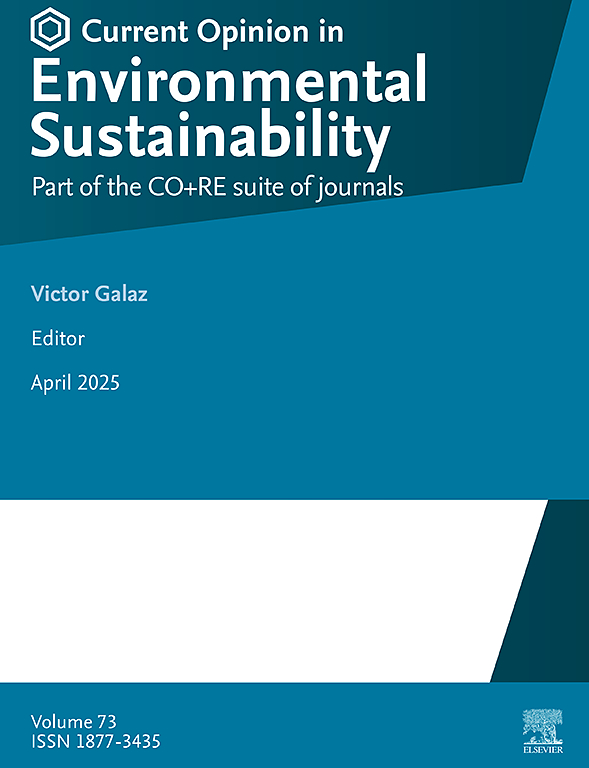
Location, Location, Location: Asset Location Data Sources for Nature-Related Financial Risk Analysis
Environmental Sustainability, Volume 74, March 2025, 101527
Christophe Christiaen, Philippa Lockwood, Alex Jackman, and Ben Caldecott
Nature-related financial risks are inherently location-specific, yet financial institutions face significant challenges in accessing reliable asset location data. This paper reviews the availability of such data across industries, highlighting key sources, including company disclosures, public registers, and third-party datasets. While supply chain data remains difficult to obtain, asset-level location information is increasingly accessible for sectors like mining and energy. The study identifies critical data gaps, particularly in agriculture, forestry, and fishing, where nature dependencies are highest. It offers recommendations for improving data transparency, advocating for standardised reporting, and leveraging emerging geospatial methodologies to strengthen nature-related financial risk assessments.
2024
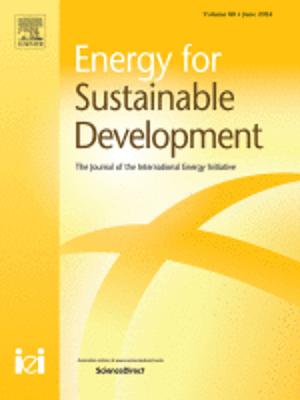
Financing just energy transitions in Southeast Asia: Application of the Just Transition Transaction to Indonesia, Vietnam, and Philippines
Energy for Sustainable Development, 4 June 2024
Abhinav Jindal, Gireesh Shrimali, Bharat Gangwani, Rajiv B. Lall
This paper investigates the applicability of the Just Transition Transaction (JTT), initially developed as a financial mechanism for South Africa's energy transition, to Southeast Asian (SEA) countries, including Indonesia, Vietnam, and the Philippines, which heavily rely on coal. Utilizing South Africa as a reference case study, we deconstruct the JTT and develop a novel framework of necessary and conducive features for evaluating its suitability for supporting a just energy transition in SEA. Our findings suggest that the JTT is well-suited for Indonesia and Vietnam but not as well suited for the Philippines. Recommendations for specific research avenues in estimating baselines and aligning emissions trajectories are provided. Finally, we propose a tiered JTT model to encourage a supranational transition in SEA and suggest the potential application of our methods for assessing similar mechanisms in other coal-reliant developing countries.
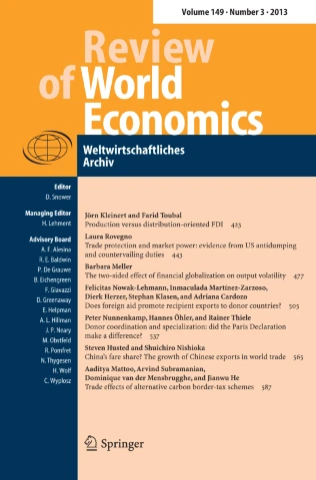
How sustainable finance creates impact: transmission mechanisms to the real economy
Review of World Economics, 23 May 2024
Ben Caldecott, Alex Clark, Elizabeth Harnett & Felicia Liu
When and how does sustainable finance tangibly contribute to creating a better world? In this paper, we outline mechanisms through which impact on sustainability outcomes is transmitted from financial systems to the real economy. We argue that, to have a positive impact on sustainability outcomes, financial institutions must make a clear contribution to: (1) reducing (increasing) the cost of capital for firms’ (un)sustainable activities; (2) increasing (reducing) their access to liquidity; and (3) encouraging or enabling sustainable corporate practices. We assess the potential for impact in each category across several asset classes. We analyse how financial institutions can integrate the development of “impact budgets” into strategic asset allocation. Finally, we consider ways in which future research could consider the implications for impact-oriented portfolio construction in more detail and develop empirical methods for further testing and quantifying the impact of the different transmission mechanisms we discuss.
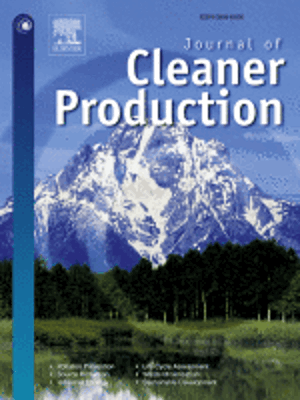
Examining the portfolio carbon footprint of Indian banking system
16 May 2024
Abhinav Jindal, Saket Hishikar, Gireesh Shrimali
This paper examines the portfolio carbon footprint of Indian banking system. To this end, we combine the emissions data from India's Biennial Update Reports to UNFCCC and Reserve Bank of India's bank database from 2010 to 2016; apply Network for Greening the Financial System's backward-looking methodology and Partnership for Carbon Accounting Financials Standards in conjunction with Leontief's Input-Output technique to estimate the weighted average carbon intensity (WACI) of bank's loans portfolio at three levels – System level, Bank group level and Spatial level. Our major findings include-first, at system level, the carbon footprint of Indian banks shows a rising trend over the study period with the aggregate WACI of bank loans increasing by 9.4% from 332.5 tCO2e/US$ million in 2010 to 363.7 tCO2e/US$ million in 2016. Second, at the group level, while the financed emissions of public sector banks have plateaued, for private sector banks they have nearly doubled during the study period, suggesting the increased exposure to carbon intensive assets. Third, on the spatial level, top five regions by WACI include Delhi, Maharashtra, Gujarat, Tamil Nadu, and Telangana in descending order.
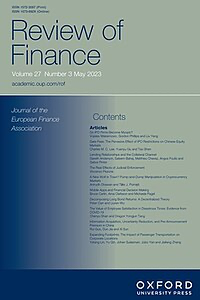
ESG shareholder engagement and downside risk
Review of Finance, Volume 28, Issue 2, March 2024, Pages 483–510
Andreas G F Hoepner, Ioannis Oikonomou, Zacharias Sautner, Laura T Starks, Xiao Y Zhou
Andreas G F Hoepner, Ioannis Oikonomou, Zacharias Sautner, Laura T Starks, Xiao Y Zhou We show that engagement on environmental, social, and governance issues can benefit shareholders by reducing firms’ downside risks. We find that the risk reductions (measured using value at risk [VaR] and lower partial moments) vary across engagement types and success rates. Engagement is most effective in lowering downside risk when addressing environmental topics (primarily climate change). Further, targets with large downside risk reductions exhibit a decrease in environmental incidents after the engagement. We estimate that the VaR of engagement targets decreases by 9 percent of the standard deviation after successful engagements, relative to control firms.

A Methodology for Fueling Mobility Markets with Hydrogen from Natural Gas plus Carbon Capture and Sequestration
16 February 2024
Esuru R. Okoroafor, Justin Bracci, Naomi L. Boness, Sarah. Saltzer, Gireesh Shrimali, Eleanor M. Hennessy, Tae Wook Kim, D'Arcy Biddle Seamon, Sally M. Benson, Mark. Zoback, Anthony R. Kovscek
Fuel cell electric vehicles utilizing hydrogen are one option for reducing emissions in the transportation sector. Future hydrogen demand for the mobility markets will be partially dependent on the evolution of state and national policies and incentives. Hydrogen from natural gas plus carbon capture and sequestration (SMR-CCS) is one pathway for manufacturing hydrogen without significant carbon dioxide (CO2) emissions. This paper describes a methodology for assessing hydrogen market demand, CO2 storage options, community impacts (air quality and community vulnerability/environmental justice concerns), land ownership and technoeconomics for the mobility market in northern California, but has application globally. Our analysis indicates that a single facility with 250 t/day hydrogen generation capacity would provide enough hydrogen to supply the Bay Area and Sacramento regions of California in a mid-case demand scenario. With existing federal and state incentives, we estimate the levelized cost of hydrogen from natural gas plus carbon capture and sequestration to be $0.13 per kg (highly dependent on California Low Carbon Fuel Standard credit assumed to be $100/ton CO2), which is competitive with grey hydrogen that averages $0.65 /kg in California. In addition, based on subsurface criteria, community impact analysis, and land ownership status, 7 sites in northern California appear to be feasible prospects for a collocated SMR-CCS new build facility. The primary barrier to CCS projects in California continues to be the regulatory framework. Further work with key stakeholders, including state and federal legislators, is needed to enhance the commercial attributes of CCS projects and public acceptance of such projects.
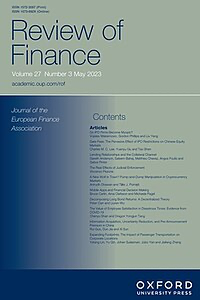
ESG shareholder engagement and downside risk
Review of Finance, Volume 28, Issue 2, March 2024, Pages 483–510
Andreas G F Hoepner, Ioannis Oikonomou, Zacharias Sautner, Laura T Starks, Xiao Y Zhou
We show that engagement on environmental, social, and governance issues can benefit shareholders by reducing firms’ downside risks. We find that the risk reductions (measured using value at risk [VaR] and lower partial moments) vary across engagement types and success rates. Engagement is most effective in lowering downside risk when addressing environmental topics (primarily climate change). Further, targets with large downside risk reductions exhibit a decrease in environmental incidents after the engagement. We estimate that the VaR of engagement targets decreases by 9 percent of the standard deviation after successful engagements, relative to control firms.
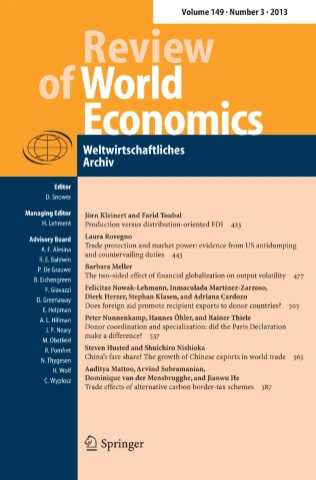
How sustainable finance creates impact: transmission mechanisms to the real economy
May 2024 | Ben Caldecott, Alex Clark, Elizabeth Harnett & Felicia Liu
When and how does sustainable finance tangibly contribute to creating a better world? In this paper, we outline mechanisms through which impact on sustainability outcomes is transmitted from financial systems to the real economy. We argue that, to have a positive impact on sustainability outcomes, financial institutions must make a clear contribution to: (1) reducing (increasing) the cost of capital for firms’ (un)sustainable activities; (2) increasing (reducing) their access to liquidity; and (3) encouraging or enabling sustainable corporate practices. We assess the potential for impact in each category across several asset classes. We analyse how financial institutions can integrate the development of “impact budgets” into strategic asset allocation. Finally, we consider ways in which future research could consider the implications for impact-oriented portfolio construction in more detail and develop empirical methods for further testing and quantifying the impact of the different transmission mechanisms we discuss.
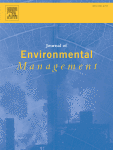
Breaking the ESG rating divergence: An open geospatial framework for environmental scores
2024 | Christophe Christiaen et al. | Journal Article
Information about a company's environmental, social and governance (ESG) performance has become increasingly important in the decision-making process of financial institutions. The financial implications of environmental challenges (e.g. water stress), negative social impacts (e.g. health impacts in local communities) or poor corporate governance (e.g. breaching legislation) all continue to increase. Accordingly, there is a need for financial institutions to incorporate information on ESG risks, opportunities and impacts in decisions that relate to risk management, investments, credit, strategy, and reporting. ESG information is typically disseminated through ESG ratings, which combine the three constituents into a single rating, or ascribe them separate scores.
2023

Global database of cement production assets and upstream suppliers
2023 | Nataliya Tkachenko et al. | Journal Article
Cement producers and their investors are navigating evolving risks and opportunities as the sector’s climate and sustainability implications become more prominent. While many companies now disclose greenhouse gas emissions, the majority from carbon-intensive industries appear to delegate emissions to less efficient suppliers. Recognizing this, we underscore the necessity for a globally consolidated asset-level dataset, which acknowledges production inputs provenance. Our approach not only consolidates data from established sources like development banks and governments but innovatively integrates the age of plants and the sourcing patterns of raw materials as two foundational variables of the asset-level data. These variables are instrumental in modeling cement production utilization rates, which in turn, critically influence a company’s greenhouse emissions. Our method successfully combines geospatial computer vision and Large Language Modelling techniques to ensure a comprehensive and holistic understanding of global cement production dynamics.
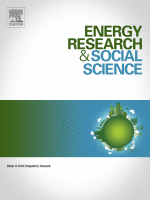
Diversify or die: Strategy options for oil majors in the sustainable energy transition
2023 | Krista Halttunen et al. | Journal Article
Mitigating climate change requires an urgent transition of the oil and gas industry. We develop two typologies of the corporate strategy and diversification options for international oil companies (IOCs) in the sustainable energy transition. Data from semi-structured interviews with oil industry professionals are thematically analysed and considered in the context of the wider literature. The resulting framework of corporate strategy options is more comprehensive than has been previously published. The strategic dilemma that the energy transition creates for IOCs is an essentially existential one. Future research should investigate whether IOCs can and should play an active part in the sustainable energy transition and how to drive the necessary action.
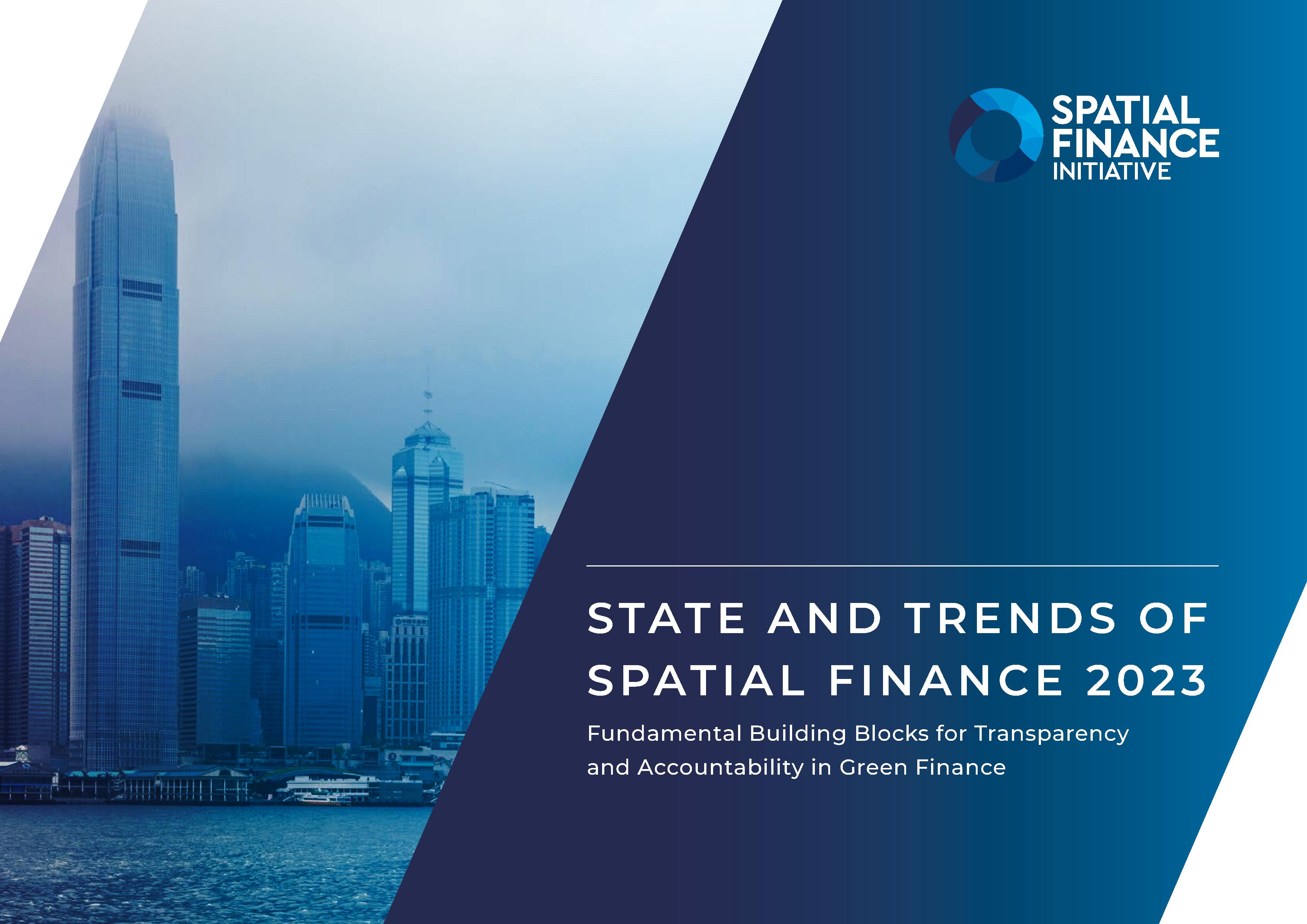
State and Trends of Spatial Finance
2023 | Christophe Christiaen | Journal Article
This report is the Spatial Finance Initiative’s second overview report of spatial finance solutions and trends. It provides an update of both technical and market developments since the 2021 report, a deep dive into three application areas with significant growth potential, and an overview of trends that will shape the future of spatial finance.
The information presented here is drawn from publicly available sources and builds upon the extensive experience of the Spatial Finance Initiative across this topic. The report by no means claims to cover all the available spatial finance offerings or potential applications but aims to show the breadth of solutions and opportunities available for applications in finance.
The report will be of relevance to audiences across both the finance and geospatial communities. To practitioners at different levels
within financial institutions, financial sector (data) intermediaries and professions. As well as to businesses, entrepreneurs and researchers across the climate and environmental science community and stakeholders across government, civil society and corporations.
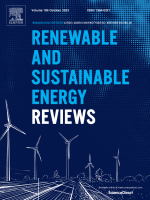
A comprehensive review on life cycle assessment of commercial and emerging thin-film solar cell systems
October 2023 | Amani Maalouf et al. | Journal Article
Thin film solar cells offer several benefits over conventional first-generation technologies including lighter weight, flexibility, and a wider range of optoelectronic tunability. Their environmental impact however needs to be investigated comprehensively to provide a clear comparison point with the first generation photovoltaics currently dominating the market. The main objective of this review is to evaluate current Life Cycle Assessment (LCA) studies conducted on thin film solar cells, highlighting the key parameters considered including life cycle stages, impact categories, and geographical locations. This included both commercially available thin film solar cells (a-Si, CIGS, CIS, CdTe, GaAs and GaAs tandem) as well as emerging (PSC, PSC tandem, DSSC, OPV, CZTS, QD) ones. A critical assessment of the results of 58 LCA studies was conducted and compared with traditional silicon based solar cells. Results indicate that emerging thin film solar cells hold great promise, as they tend to perform better than commercially available ones in the specified indicators, especially for CZTS and OPV. The assessment demonstrated that overall thin film solar cells had less energy requirement and better environmental performance than conventional crystalline silicon solar cell systems. However, due to their lower efficiencies their energy payback time was higher. This review provides a benchmark for the environmental LCA of different thin film solar cell technologies in order to highlight the relevance of these devices for sustainable energy generation and to give manufacturers and LCA experts information and a basis for future evaluation of solar cells.
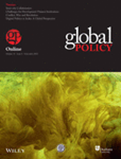
Net zero portfolio targets for development finance institutions: Challenges and solutions
11 September 2023 Sam Fankhauser, Sugandha Srivastav, Ingrid Sundvor, Stephanie Hirmer, Gireesh Shrimali | Journal Article
Development finance needs to be better aligned with climate change objectives, and many experts see net zero portfolio targets as a powerful way to achieve this. This paper explores the operational implications of net zero portfolio targets for development finance institutions (DFIs). We set out an agenda to move development finance towards net zero goals in a way that acknowledges development concerns. These include (1) setting context-specific emissions pathways with granular bottom-up data and emphasising climate-development win-wins; (2) dealing with inertia and lumpiness in the portfolio through ‘when’ flexibility (multiyear carbon budgets) and ‘where’ flexibility (sharing of carbon space); (3) encouraging transition projects through future-emissions accounting and transition credits; (4) managing climate-development and other trade-offs with an internal carbon price and ESG standards; and (5) accounting for emissions after project-end with monitoring and legal provisions.
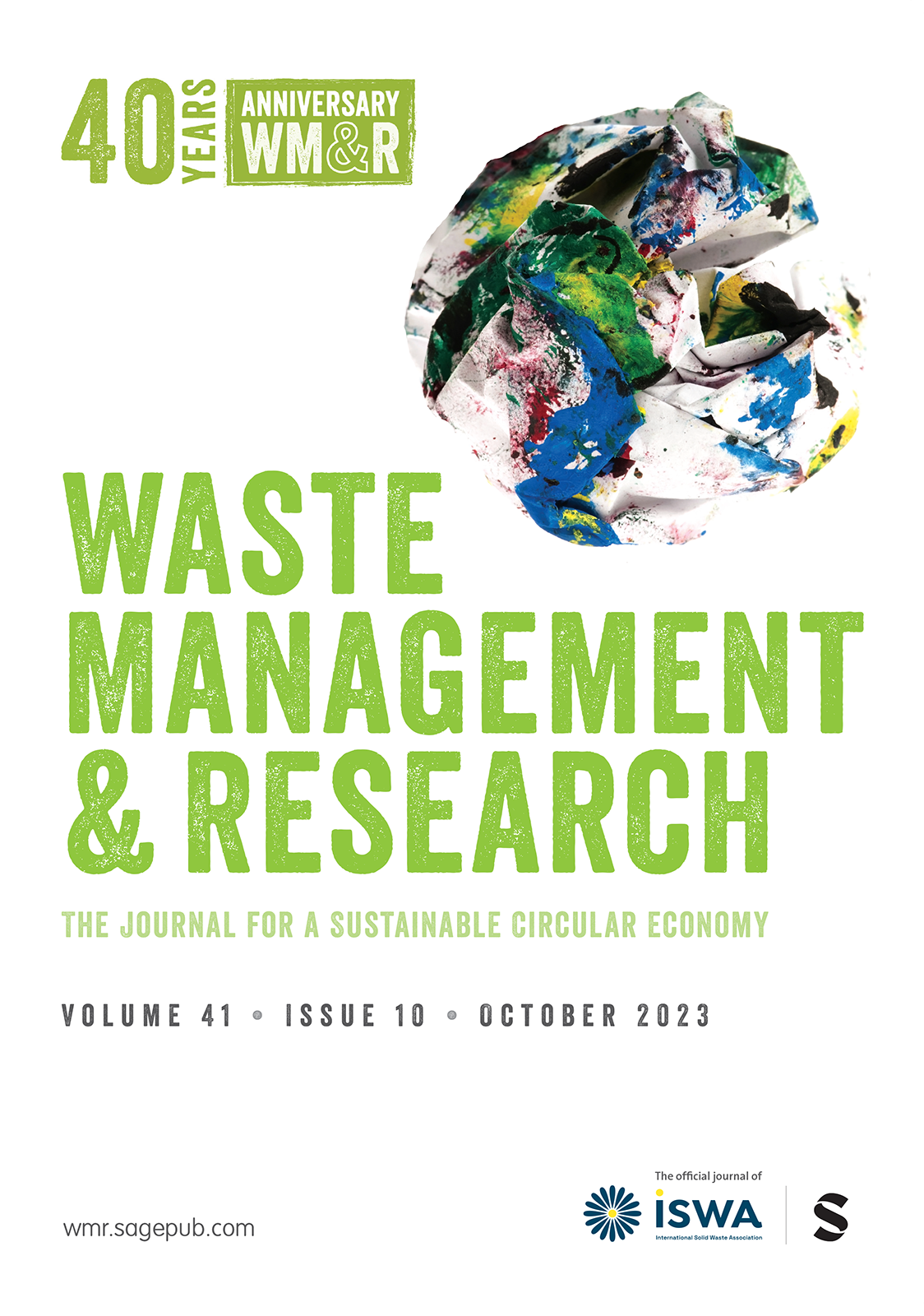
A review of plastic waste circular actions in seven developing countries to achieve sustainable development goals
July 2023 | Amani Maalouf et al. | Journal Article
Plastic waste circularity is a priority at a global level. Sustainable development goals (SDGs) set the ways to go, and the circular economy principles underlined the ‘green’ strategies to be employed. However, in practice, there is still much to do, especially in developing countries, where open burning and open dumping still represent the common way of plastic waste disposal. This review aims to analyse current plastic waste circular approaches in low-middle income settings. Seven countries were selected based on the economic level and data availability from the authors, and analysed to collect and critically discuss the actions implemented at a city level. Examples of waste minimization and recycling strategies, selective collection systems and public campaigns are reported from Africa, Asia and Latin America. First, a background analysis related to physical and governance aspects of municipal solid waste management systems of the chosen settings was conducted. The assessment was focused on the treatment processes or minimization actions. Then, the applicability of the projects to achieve the SDGs was commented on. The outcomes of the research underline the need to: (1) scale up small-scale and pilot projects, (2) disseminate good practices in more low- to middle-income settings, (3) create synergies among international partners for further replications in cities. Urgent solutions to plastic waste pollution are needed. The review presented practical actions to be implemented now to boost plastic waste circularity in developing cities.

Policy design for making India self-sufficient in green energy technologies
Electricity Journal Volume 36, Issue 4, May 2023
Gireesh Shrimali, Abhinav Jindal | Journal Article
In this paper, we suggest how India can become atmanirbhar (i.e. self-reliant) in development of green energy technologies- solar, battery storage and green hydrogen, given its stated commitments in clean energy. First, we introduce a generalized policy design – a set of ten policy measures: seven necessary and three sufficient- with the former being on the supply side and the latter on the demand side. The paper argues that while the ideal policy mix would be technology dependent, based on technology maturity and the strategic positioning of the country, it should draw both from supply side (i.e., for domestic development) and demand side (i.e., for scale deployment). Then, we suggest the required individual strategies for each of the three technologies- such as a manufacturing focused policy for solar solely to develop competence in manufacturing; a bottom-up, manufacturing-led policy for battery storage with focus on deployment in parallel with technology development; and traditional top-down, research-led strategy for green hydrogen by entering via development through supply side and complementing via deployment through demand side. Finally, we compare these with the existing domestic energy industrial policies as well as those prevalent in other jurisdictions such as the US and China.
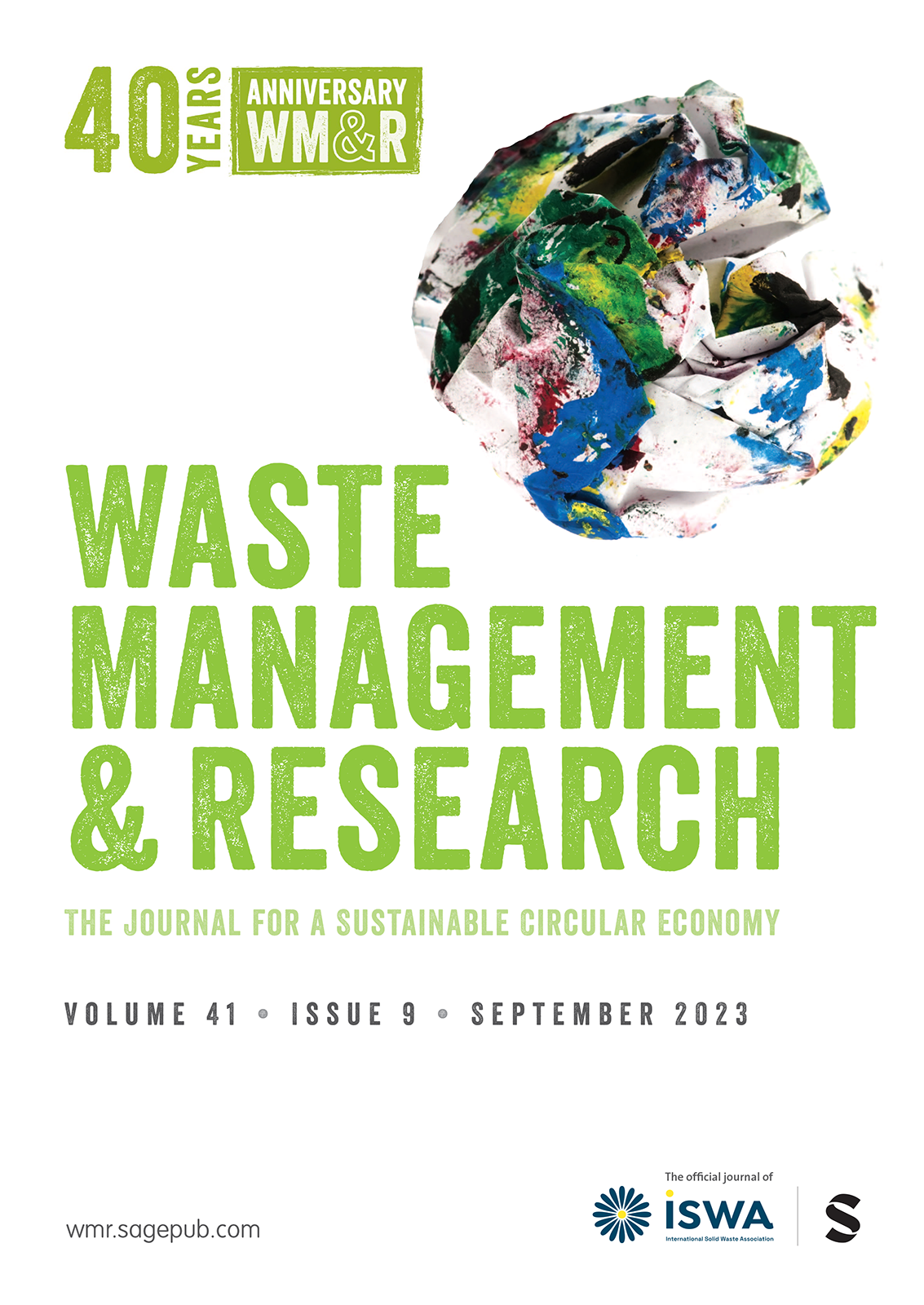
Waste management evolution in the last five decades in developing countries – A review
April 2023 | Amani Maalouf et al. | Journal Article
This review provides the history and current paradigms of waste management (WM) practices in developing nations during the last five decades. It explores the evolution of the challenges, complexities, and trends during this period. This paper, for the first time, presents an estimation of the amount of municipal solid waste (MSW) generated in developing nations in the last five decades based on the material flow analysis approach. Overall, the amount of MSW in developing countries has increased from about 0.64 billion Mt in 1970 to 2 billion Mt in 2019. This review demonstrates the importance of finding new WM approaches in developing nations in the context of formulating policies, strategies, and highlights the major trends that re-define WM in developing countries. It also aims to present the holistic changes in technology, economic and environmental feasibility aspects to attain an integrated sustainable WM system in developing countries. Specific focus on open-burning, open-dumping, informal recycling, food waste, plastic pollution, and waste collection with reference to Sustainable Development Goals are explained. Drivers for the way forward including circular economy are investigated.
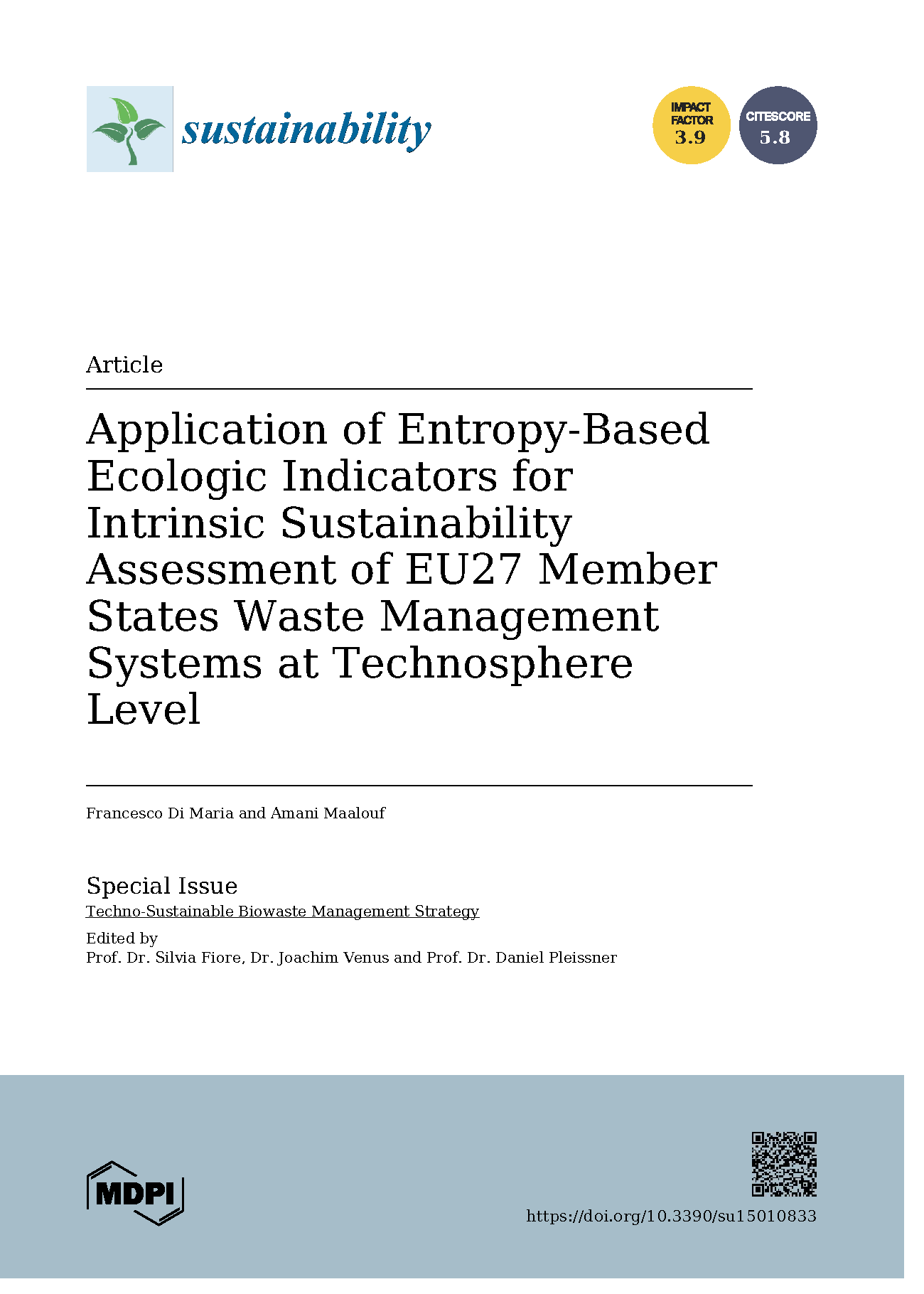
Application of Entropy-Based Ecologic Indicators for Intrinsic Sustainability Assessment of EU27 Member States Waste Management Systems at Technosphere Level
January 2023 | Amani Maalouf et al. | Journal Article
Starting from the specific entropy (SE) indicator, which is well exploited by ecologists for investigating the status of health and the development tendency of ecosystems, a specific entropy per amount of exergy gained (SEEG) was proposed in this study for assessing the intrinsic sustainability of systems in the technosphere. According to the SE, the lower the SEEG indicator, the higher the intrinsic sustainability of the investigated system. This indicator was used for assessing the intrinsic sustainability of the main waste management (WM) systems of the different EU27 member states (MS). The main findings demonstrate average values of SEEG of about 0.0026 and 0.009 for composting and recycling, respectively. For incineration and landfilling, SEEG was 1.310 and 1.333, respectively. This indicates that incineration activity has a lower intrinsic sustainability. Concerning WM systems, lower values of SEEG were detected for EU 27 MS with recycling and composting percentages of waste >55%. Therefore, the maximization of percentages of waste recycled and composted, as well as solid recovered fuel production, are preferred over incineration.
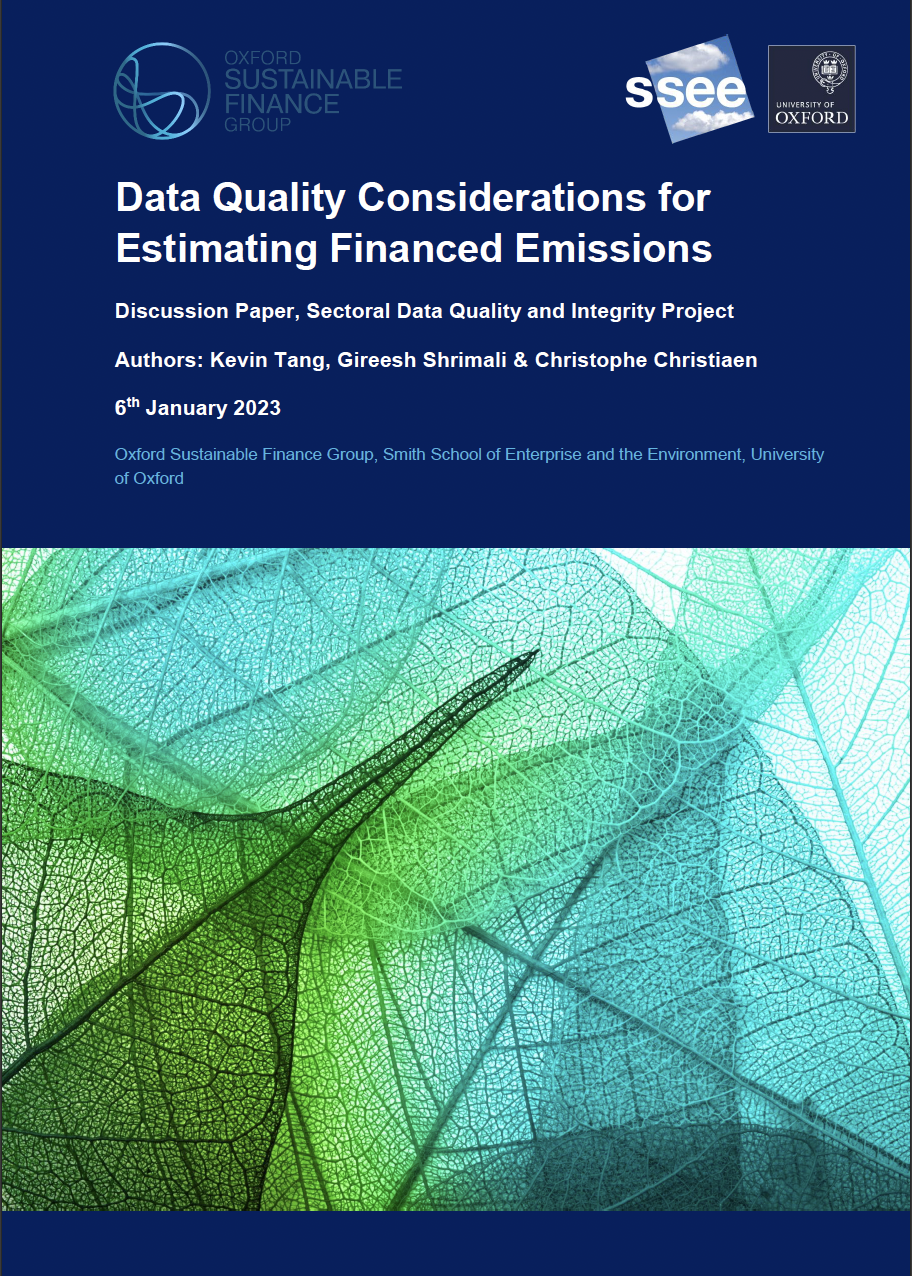
Discussion paper: Data Quality Considerations for Estimating Financed Emissions (pdf)
January 2023 / Kevin Tang, Gireesh Shrimali, Christophe Christiaen / Discussion paper
Reporting standards for carbon accounting have been developed to assist financial institutions in compiling their financed emissions — the client emissions that are attributable to the institution’s financing. Some of these include guidance on determining data quality for data sources used. For instance, the Partnership for Carbon Accounting Financials (PCAF) data quality hierarchy proposes reported and verified emissions disclosures as the most accurate and reliable source of emissions data, followed by various methods of inferred and estimated emissions. In this paper, we examine the extent to which guidance on data quality are aligned with the practical considerations and availability of emissions information for financial institutions.
For financial institutions, an understanding of differences in data quality is particularly important, as they need to compile emissions data across multiple individual companies in their portfolio. However, the way these disclosures have been calculated by corporations can vary in methodology and accounting boundaries. This can result in several problems since variability in reporting methods or boundaries can amplify divergence in reporting errors, emissions estimation, and emissions that are attributable to the financial institution — ultimately impacting the way emission targets are set and progress or alignment monitored. We further explore revised guidance on assessing data quality, and the accuracy and precision of other methods of emissions estimation.
2022
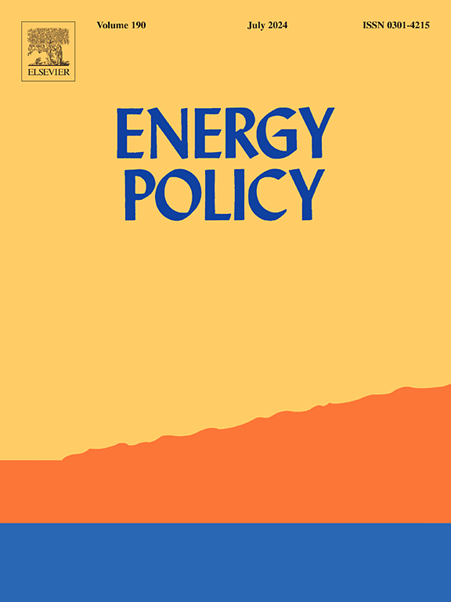
Cost-benefit Analysis of Coal Plant Repurposing in Developing Countries, Energy Policy, 164, 112911.
2022 | Abhinav Jindal, Gireesh Shrimali | Journal Article
In the context of climate change, developing countries with sizeable coal capacities; such as South Africa, Chile and India; are exploring coal plants retirements by repurposing them for productive uses. However, a framework to establish the economic rationale for repurposing does not exist. We develop a detailed cost-benefit framework for the same; for three applications – solar energy, battery energy storage and synchronous condenser; and apply it to a representative coal plant in India. Our findings reveal a strong economic rationale for repurposing. First, the present value of repurposing benefits outweigh corresponding decommissioning costs – the direct, indirect and total decommissioning costs are $58.11 million, $45.80 million and $103.91 million, respectively; the corresponding gross benefits from repurposing are $122.79 million, $468.03 million and $590.82 million, respectively. Second, even after excluding social benefits, net benefits of repurposing cover 10%–32% of capital expenditure of the repurposing options. Third, decommissioning costs are about 50% for coal plants in India (at $58 million) vis-à-vis plants in the US (at $117 million). Finally, we provide a methodology for selecting plants for repurposing; based on age, energy charges and qualitative factors.

Impact of Renewables on Utility Finances: Assessing Merit Order Effect for an Indian Utility, Energy Policy. 168, 113092.
2022 | Sourabh Jain, Gireesh Shrimali | Journal Article
Declining levelized costs of renewable energy have become a driving force in supporting renewable energy in India; the levelized cost of wind and solar has plummeted to between 3.3¢/kWh and 4¢/kWh. However, limited research exists on the impacts of renewables on the finances of Indian distribution utilities. The present study examines the financial impact of incremental penetration of the hydro, solar, and wind alternative in the generation mix of the distribution company of the Indian state of Madhya Pradesh. Using real-time 15-min interval data and a merit-order-dispatch model, the study quantifies the merit-order-effect and assess the potential savings from renewables. The results indicate that depending upon the penetration level under demand growth cases, renewable integration could lower the power purchase cost of Indian utilities by up to 11%. Wind produces most savings between 0.11¢/kWh and 2.71¢/kWh followed by solar −0.17¢/kWh and 2.56¢/kWh and hydro −0.32¢/kWh and 2.05¢/kWh. The savings will increase with rising electricity demand and plummeting costs of renewables. Integrating moderate levels of renewables no longer presents economic-environment trade-offs and can simultaneously meet multiple policy goals of energy affordability and environmental sustainability.
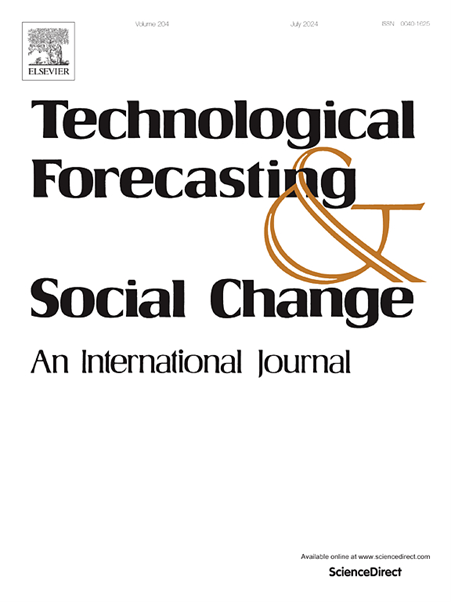
Deploying Battery Storage at Scale in the Indian Power Sector, Technological Forecasting and Social Change, 176, 121467.
2022 | Abhinav Jindal, Gireesh Shrimali | Journal Article
India's envisages uptake of 450 Giga Watt (GW) of renewable energy capacity by 2030. The resulting system flexibility needs can be met by 50 GW of 4-hour energy storage. However, system flexibility has historically been met by coal power plants, and India also plans to install 50 GW of new coal power capacity during 2022–27. Our paper answers three related questions that would maximize deployment of battery storage with appropriate policy design. First, what is the cost-competitiveness of renewable energy and battery storage compared to new coal-based power? Second, what should be the high-level policy framework for ensuring necessary deployment of battery storage? Third, what should be the appropriate procurement mechanisms for battery storage along with renewable energy? To answer these questions, we first compare forecasted levelized cost of energy for renewable energy and battery storage with coal power, and then use two frameworks to investigate policies. Our findings are as follows. First, renewable energy and battery storage is cost-competitive over new coal starting 2022. Second, India should adopt a battery portfolio standard (BPS) that is linked to existing renewable portfolio standard (RPS). Third, India should adopt the renewable dispatchable generation (RDG) power purchase agreement (PPA) to ensure that multiple policy criteria are met.
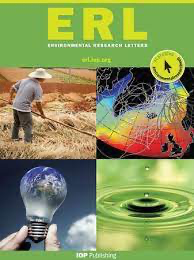
Financial Risks to Coal Value Chain from a Cost-Conscious Shift to Renewable Energy in India, Environment Research Letters, 17, 124002.
2022 | Alexandre Koberle, Gireesh Shrimali, Shivika Mittal, Abhinav Jindal | Journal Article
A realignment of the financial sector is necessary to both enable the energy system transformation and manage financial risks implied by a transition to net-zero emissions. These include transition risks stemming from policies that limit or price greenhouse gas emissions. The financial sector has turned to scenarios developed by the research community for information on how transitions may unfold. Emerging methodologies linking transition scenarios to risk assessment are in their early stages but are key to enable financial institutions (FIs) to carry out the task at hand. Commercial FIs are exposed to transition risks primarily through their portfolio holdings and how assets therein may fare in a transition. Understanding this counterparty risk is key for development and interpretation of climate-financial scenarios. FIs will need to consider how the firms in a portfolio—the counterparties—will react to the transition and their capacity to navigate the changes involved. Here we apply a transparent and flexible framework to explore transition risks to corporate firms from low-carbon transition scenarios. We show that considering firms' strategic responses to the changes in their operating environment is an important determinant of the resulting transition risk estimates. We provide an illustrative case study of the coal value chain in India to demonstrate how the framework can be applied to both risk assessment and business strategy setting.
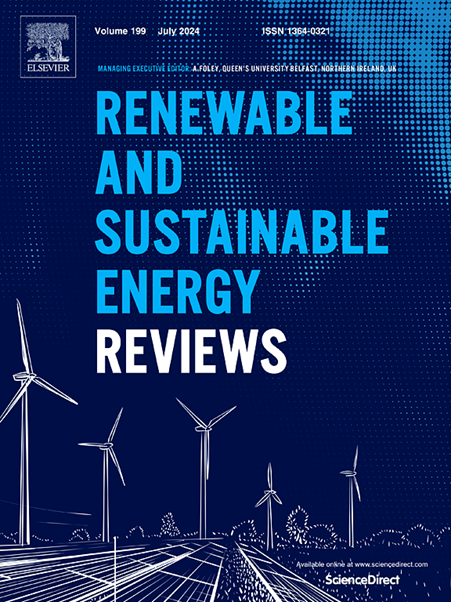
Accelerating a Clean Energy Transformation in Southeast Asia: Role of Public Policy and Governments, Renewable and Sustainable Energy Reviews, 159, 112226.
2022 | Joao Aleluia, Pradeep Tharakan, Ananth Chikkatur, Gireesh Shrimali, Xu Chen | Journal Article
Southeast Asia is a significant stakeholder in the global action against climate change, given its growing population, rising greenhouse gas emissions, and vulnerability to climate change impacts. Public policy makers in this region are faced with the challenge of transitioning to cleaner energy sources to enable the attainment of Paris Agreement goals, while also expanding access to affordable and reliable energy supplies. Southeast Asia has one of world's fastest growing rates of greenhouse gas emissions due to rising fossil fuel combustion, second only to South Asia. As such, it is imperative to decouple its energy consumption from emissions growth. This paper reviews Southeast Asia's energy sector trends, with a focus on electricity supply and demand vis-à-vis global decarbonization efforts. Based on global and regional best practices, the paper highlights the crucial role that governments and public policy can play in accelerating the region's clean energy transition, namely through the establishment of mandatory long-term climate and renewable energy targets and binding policies; use of iterative and adaptive power system planning; support for effective market development; financing of pioneering investments and trunk infrastructure; and support for a just and equitable transition.
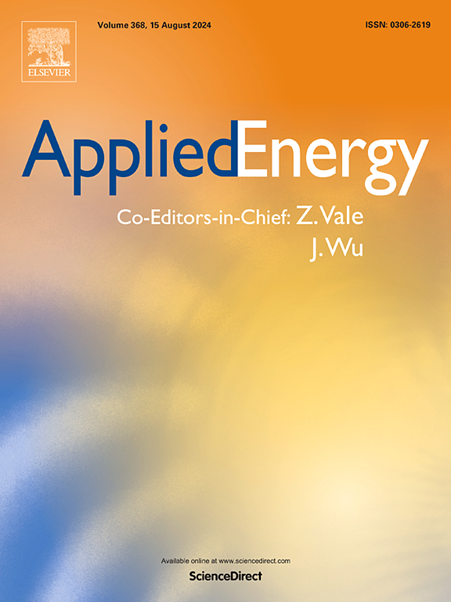
Identifying Coal Plants for Early Retirement in India: A Multidimensional Analysis, Applied Energy, 312, 118644.
2022 | Nada Maamoun, Puneet Chitkara, Joonseok Yang, Gireesh Shrimali, Joshua Busby, Sarang Shidore, Yana Jin, Johannes Urpelainen | Journal Article
Coal-fired energy generation is the backbone of India’s power sector and considered a driver of its economic development. However, it is associated with detrimental environmental and health impacts in India and its fleet is currently struggling with overcapacity and inefficiency problems. One solution to address these challenges is the early retirement of some of India’s coal-fired power plants. In this paper, we introduce multidimensional indices that identify plants for retirement based on comprehensive criteria that include technical and economic characteristics of plants as well as their environmental impacts. We implement an ensemble approach, where we formulate 8008 indices based on all possible combination of seven relevant parameters and rank plants accordingly. This approach facilitates a comprehensive analysis of the plants’ performance on different parameters and provides a new outlook on plant retirements that differs from the common approach of retiring plants based solely on technical characteristics such as age, capacity, and heat rate. Our results show that top plants recommended for early retirement are typically 7 years older, 13% more expensive and have around 40% higher population exposure to emissions compared to an average plant in India. We estimate the potential costs saved from the retirement of the worst-performing 50 GW of generating capacity to be $21 billion resulting from shifting ownership towards a cheaper cost of capital and replacing coal by more competitive sources such as solar power.
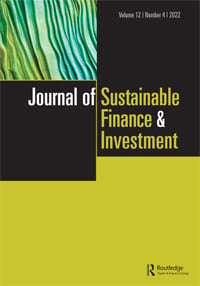
Spatial finance: practical and theoretical contributions to financial analysis
December 2022 | Ben Caldecott, Matthew McCarten, Christophe Christiaen, Conor Hickey | Journal Article
We introduce and define a new concept, ‘Spatial Finance’, as the integration of geospatial data and analysis into financial theory and practice, and describe how developments in earth observation, particularly as the result of new satellite constellations, combined with new artificial intelligence methods and cloud computing, create a plethora of potential applications for Spatial Finance. We argue that Spatial Finance will become a core future competency for financial analysis, and this will have significant implications for information markets, risk modelling and management, valuation modelling, and the identification of investment opportunities. The paper reviews the characteristics of geospatial data and related technology developments, some current and future applications of Spatial Finance, and its potential impact on financial theory and practice.
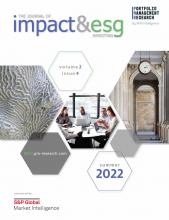
Scope 3 Emissions: Measurement and Management
Summer 2022 | Gireesh Shrimali | Journal Article (Paywall)
Given that climate change is one of the biggest risks facing the real economy as well as the financial industry, there is an urgent need to measure and manage this risk. One way to measure this risk is the carbon exposure of products and their corresponding supply chains. While the process of measuring and managing Scope 1 and Scope 2 emissions is well established, the same cannot be said of Scope 3 emissions. This article first provides an overview of frameworks for measuring and managing Scope 3 emissions in an ideal world, where product-level marginal emission factors are known with certainty. It then lays out the issues surrounding the measurement and management of uncertain Scope 3 emissions. It also discusses the progress made so far on these issues, provides recommendations, and lays out a research agenda for future work.
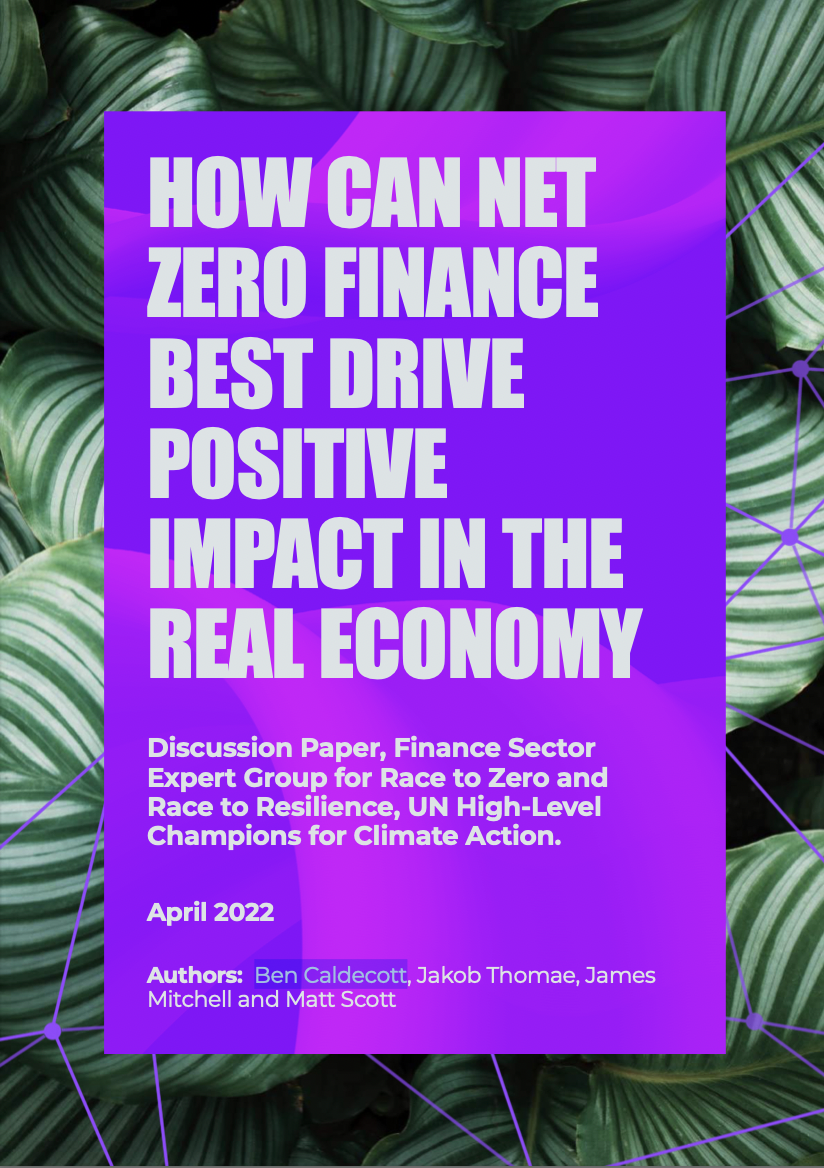
How can net zero finance best drive positive impact in the real economy
29 April 2022 | Ben Caldecott, Jakob Thomae, James Mitchell, Matt Scott | Discussion Paper
As attention turns to executing new climate-related finance commitments, important nuances are emerging in the application of ‘Paris alignment’ and ‘net zero’ to financial institutions and finance sub-sectors as compared to other sectors.
For example, a variety of market participants, civil society organisations, and researchers are highlighting that short-term actions to decarbonise portfolios – such as rebalancing away from fossil fuel companies into technology companies in listed equity portfolios through secondary market transaction – may not be an effective way to support Paris alignment in the real economy.
The actions that financial institutions need to take to drive positive change towards Paris alignment will almost certainly be quite different. But what are they and how should financial institutions design and execute plans to support Paris alignment? This discussion paper seeks to acknowledge these nuances and explore frameworks that may be helpful to support financial institutions in driving outcomes in the real economy – in other words, to ‘maximise real economy impact’.
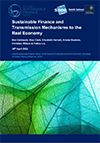
Sustainable Finance and Transmission Mechanisms to the Real Economy (pdf)
19 April 2022 | Ben Caldecott, Alex Clark, Elizabeth Harnett, Krister Koskelo, Christian Wilson and Felicia Liu | Working Paper
When and how does sustainable finance contribute to a better world? In this paper, we outline the mechanisms through which impact is transmitted from the financial system to the real economy. We argue that, in order to have a positive environmental impact, financial institutions must make a clear and measurable difference in one or more of the following ways: (i) reducing (increasing) the cost of capital for (un)sustainable activities; (ii) increasing (reducing) access to capital for (un)sustainable activities; and (iii) encouraging or enabling sustainable practices by counterparties, such as companies, sovereigns, and individuals. We assess the availability of impact across key asset classes, hypothesising a maximum potential for impact for each. We call for financial institutions, and particularly large universal owners, to integrate the development of "impact budgets" into strategic asset allocation. Future research could usefully consider the implications for impact-oriented portfolio construction in more detail, as well as seeking to develop empirical methods for further testing and quantifying the impact of the different transmission mechanisms discussed here.
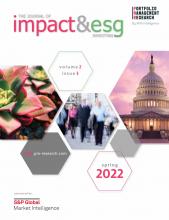
Transition Bond Frameworks: Goals, Issues, and Guiding Principles
11 April 2022 | Gireesh Shrimali | Journal Article (Paywall)
In the context of reaching our climate targets - for example, the 2°C target set at Paris - the role of transition finance, and therefore transition bonds, is going to be key. This article provides a discussion of the goals, issues, and guiding principles for transition bonds. It first argues that a comprehensive transition bonds framework needs to align with appropriate climate transitions, allow for flexibility in getting to climate goals, and minimize greenwashing. The article then offers a simple transition bond rating framework based on the stringencies of climate targets as well as transition pathways. In this process, the crucial roles of sector-based approaches, offsets, regulations, and data quality are also discussed. In addition, the article sets out a research agenda, including identifying potential transition pathways, developing methodologies for additionality of proposed interventions, and creating regulation to ensure transparency.
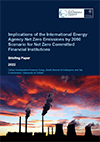
Implications of the International Energy Agency Net Zero Emissions by 2050 Scenario for Net Zero Committed Financial Institutions (pdf)
24 March 2022 | Christian Wilson, Anthony Limburg, Ben Caldecott | Briefing Paper
Ahead of COP26 in Glasgow, the International Energy Agency (IEA) published its Net Zero Emissions by 2050 Scenario (IEA NZE). The IEA NZE is the first IEA scenario consistent with holding the increase in global average temperatures to 1.5 degrees and provides clear milestones for the future role of fossil fuel energy. This report examines how financial institutions committed to net zero by 2050 can use the IEA NZE to develop financing policies aligned with these commitments. This requires an end to project finance for new fossil fuel reserves, and a requirement that companies implement transition plans ending fossil fuel reserve expansion to be eligible for corporate finance. For power generation, this requires an end to project finance for new coal and a requirement that companies implement transition plans phasing out coal generation by 2030 in advanced economies and 2040 globally, while unabated gas generation needs to be sharply curtailed, by over 90% by 2040. This report then uses cases studies to demonstrate the disconnect between the conclusions of the IEA NZE and the current financing activities of major financial institutions committed to net zero.

Bank green lending and credit risk: an empirical analysis of China's Green Credit Policy
18 January 2022 | Xiao Zhou, Ben Caldecott, Andreas Hoepner, Yao Wang | Journal Article
This study empirically investigates the relationship between banks' green lending and their credit risk, and how Chinese green finance regulations contribute to the solvency of individual banks and the resilience of the financial system. Analysing a sample of 41 Chinese banks from 2007 to 2018, we find that the association between a bank's (relative) green lending as a proportion of its overall loan portfolio, and its credit risk, depends critically on the size and structure of state ownership. While the implementation of China's Green Credit Policy reduces credit risk for the major state-controlled banks, it increases credit risk for the city and regional commercial banks. This performance difference appears largely due to information and expertise asymmetries, with the city and regional commercial banks having less access to information and expertise necessary to evaluate the credit risk of green lending. Understanding this phenomenon can help policymakers tailor green finance policies according to banks' characteristics. It also suggests that mechanisms and platforms for the city/regional commercial banks to learn from the major state-controlled banks could be beneficial.
2021
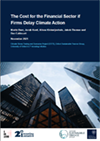
The Cost for the Financial Sector if Firms Delay Climate Action (pdf)
17 November 2021 | Moritz Baer, Jacob Kastl, Alissa Kleinnijenhuis, Jakob Thomae and Ben Caldecott | Report
In this report we estimate the additional costs for the financial sector when climate action by companies is delayed. To do this we model the impact on the equity value and the probability of default for publicly listed companies in polluting sectors resulting from climate-related transition risks that create financial losses.
To undertake this analysis, we have developed an exploratory bottom-up asset-level climate stress testing framework that translates climate-related transition shocks affecting individual firms to the shocks affecting the value of financial assets. Using asset-level data we capture the transition impact on the profitability of publicly listed companies in four of the most climate-critical sectors globally: power generation, oil & gas, coal production and the automotive industry.
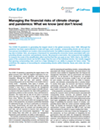
Managing the financial risks of climate change and pandemics: What we know (and don't know)
22 October 2021 | Nicola Ranger, Olivier Mahul, Irene Monasterolo | Journal Article
The COVID-19 pandemic is generating the largest shock in the global economy since 1929. Although the pandemic has been unprecedented in scale and type, such complex, compounding shocks are not uncommon and are more likely in our modern, interconnected world. Our ability to assess and anticipate compounding risks is limited. Here, we propose a framework for assessing the economic losses associated with compounding climate, economic, and pandemic shocks. We propose a new metric, the compound risk multiplier, to measure the scale of the amplification effect and find that this can peak at over 150%; that is, the GDP impacts of the compound shock can be 50% larger than the sum of the individual shocks. Our results suggest that ignoring compounding risks could be a major blindspot in our ability to prepare for future crises. This underlines the urgency of accounting for compounding shocks within financial, fiscal, and crisis risk management.
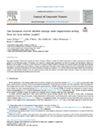
Can European electric utilities manage asset impairments arising from net zero carbon targets?
1 October 2021 | Conor Hickey, John O'Brien, Ben Caldecott, Celine McInerney, Brian Ó Gallachóirde | Journal Article
This paper develops a framework to assess the ability of electric utilities to sustain the forced impairment of carbon emitting power plants and applies it to the European market. We conclude that most European utilities have the financial capacity to meet the requirements of net zero carbon emissions under the scenarios with timely action. However, a delay of as little as five years could cause serious financial problems across the sector.
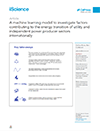
A machine learning model to investigate factors contributing to the energy transition of utility and independent power producer sectors internationally
24 September 2021 | Galina Alova and Ben Caldecott | Journal Article
There is evidence of independent power producers dominating the electricity sector's uptake of renewable energy, with utilities lagging behind. Here, we build a machine-learning-based model with multiple dependent variables to simultaneously explore environmental policy and market structure contributions to investment patterns in different technologies by utility and independent producer sectors across 33 countries over 20 years. With the analysis enabling the capture of non-linear relationships, our findings suggest substantial resistance of gas capacity to even strict carbon pricing policies, while coal appears more responsive. There is also an indication of policy pricing in effects. The positive link of renewables subsidies and fossil fuel disincentives to renewables expansion, particularly wind, is more prominent for independent power producers than utilities. Regarding market structures, different characteristics tend to matter for renewables growth compared to fossil fuel reductions. The results also suggest considerable differences in policy and market factor contributions to technology choices of Organisation for Economic Co-operation and Development vis-à-vis emerging economies.

State and Trends of Spatial Finance 2021: Next Generation Climate and Environmental Analytics for Resilient Finance (pdf)
15 July 2021 | Spatial Finance Initiative | Report
Spatial finance is the integration of geospatial data and analysis into financial theory and practice. This report is the Spatial Finance Initiative's first annual review of the state and trends in spatial finance. The report examines the underlying technological advancements and market developments that make spatial finance an increasingly important proposition for financial institutions. It presents both emerging and mature applications that are already available on the market and highlights future trends. Spatial finance will transform the availability of information across the financial system and allow users to measure and manage risks and externalities without having to rely on patchy and often very inaccurate corporate reporting.

Breaking the Bond: Primary Markets and Carbon-Intensive Financing (pdf)
15 June 2021 | Christian Wilson, Ben Caldecott | Working Paper
Financial institutions with over $70 trillion in assets have so far pledged to achieve net zero portfolios and loanbooks by 2050, including meeting ambitious interim 2030 targets. This working paper reveals that passive corporate bond funds not only hold fossil fuel assets, but directly finance them by buying large quantities of new bonds issued by fossil fuel companies. To track and manage transactions that are channeling capital flows directly into fossil fuels, the authors propose a new metric, Primary Market Carbon Exposure (PMCE). PMCE measures the proportion of securities bought in primary market transactions, for example shares at IPO or new bond issuance, from fossil fuel companies. They find that between 2015 - 2020, 14% of the value of new bond issues bought by U.S. corporate bond Exchange Traded Funds (ETFs) were in fossil fuels.

The energy transition and changing financing costs (pdf)
19 April 2021 | Xiaoyan Zhou, Christian Wilson, Ben Caldecott | Report
The cost of capital is a key lever in the real economy, due to its ability to influence capital flows and investment decisions. This report seeks to understand how financing costs across different energy technologies and markets has changed over the last twenty years. It forms the first output of the Energy Transition Risk and Cost of Capital Project (ETRC) initiated by the Oxford Sustainable Finance Group. While climate-related transition risks in the energy sector are sometimes viewed as distant, long-term risks, the impacts of which will not be felt for decades to come, we find this does not reflect reality.

Financial supervision beyond the business cycle: towards a new paradigm
3 March 2021 | Anne Schönauer, Jakob Thomä, Ben Caldecott, Fiona Spuler, Johannes Honneth | Working Paper
At the turn of the decade, a specific class of risks are coming increasingly into focus - long-term risks (LTRs). Pandemic, climate change, and social resilience represent major threats both to economies and sound and stable financial markets. This paper explores both the extent to which these types of risks are on the radar of financial supervisors and central banks, and mechanisms to drive financial supervision "beyond the business cycle". To this end, the paper reviews over 2,000 speeches, reports, and press releases as well as other public documentation such as Financial Stability Reports across eight major central banks in the Global North & South. It presents an audit of the risk management activities of the eight central banks.
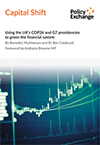
Capital Shift: Using the UK's COP26 and G7 presidencies to green the financial system
2 March 2021 | Benedict McAleenan, Ben Caldecott | Report
In 2021, the UK will host the G7 and COP26 and take a key part in other major summits, giving it a unique opportunity to lead the global diplomatic agenda. This report argues that he UK should use its position to drive a programme of green finance reforms that will enable a fundamental shift to a sustainable global economy. The paper recommends policies for a nature-based financial disclosures framework, better collection and standardisation of environment-related risks to the financial system, better recognition of those risks within public and central bank policies, new governance measures and a better approach to regulation that would support the shift towards green finance.
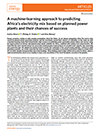
A machine-learning approach to predicting Africa's electricity mix based on planned power plants and their chances of success
11 January 2021 | Galina Alova | Journal Article
Energy scenarios, relying on wide-ranging assumptions about the future, do not always adequately reflect the lock-in risks caused by planned power-generation projects and the uncertainty around their chances of realization. In this study we built a machine-learning model that demonstrates high accuracy in predicting power-generation project failure and success using the largest dataset on historic and planned power plants available for Africa, combined with country-level characteristics. We found that the most relevant factors for successful commissioning of past projects are at plant level: capacity, fuel, ownership and connection type. We applied the trained model to predict the realization of the current project pipeline. Contrary to rapid transition scenarios, our results show that the share of non-hydro renewables in electricity generation is likely to remain below 10% in 2030, despite total generation more than doubling. These findings point to high carbon lock-in risks for Africa, unless a rapid decarbonisation shock occurs leading to large-scale cancellation of the fossil fuel plants currently in the pipeline.
2020
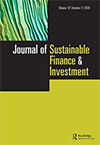
Climate risk management (CRM) and how it relates to achieving alignment with climate outcomes (ACO)
21 December 2020 | Ben Caldecott | Research Article
Instead of incidentally contributing to Alignment with Climate Outcomes (ACO) through Climate Risk Management (CRM) initiatives like the Task Force on Climate-related Financial Disclosures (TCFD), we need specific ways of dealing with and contributing to the challenge of alignment. These need to be articulated, developed, and scaled across the financial system rapidly. Without rebalancing the distribution of effort and spending more time explicitly on ACO, we cannot ever hope to align finance and the financial system with climate change objectives. One of the most significant things policymakers can do to spur rapid ACO is to make ACO targets and transition plans mandatory for all financial institutions as soon as possible.
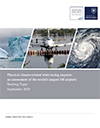
Physical climate-related risks facing airports: an assessment of the world's largest 100 airports (pdf)
22 September 2020 | Shibao Pek, Ben Caldecott | Briefing Paper
Climate change will cause extreme weather events to become more frequent and severe over the 21st century. This will have significant impacts on the aviation industry, which is highly sensitive to weather, and airports in particular. Two major climate-related adaptation risks facing airports are temporary inundation due to storm surge and restrictions on airplane take-off weight due to high temperatures. The frequency and severity of both are likely to increase due to climate change. This study applies generalised extreme value and normal distributions to extrapolate historical sea level and temperature data from each airport to the end of the 21st century, using mean values of sea level and temperature rise under three emissions scenarios used by the IPCC (RCPs 2.6, 4.5 and 8.5). Owners of airports and their investors have an important role to play in drawing attention to the issue of climate-related physical risk, as well as supporting airports to implement the necessary measures to adapt to this risk.
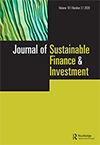
Defining transition finance and embedding it in the post-Covid-19 recovery
2 September 2020 | Ben Caldecott | Journal Article
While Transition Finance is increasingly entering the sustainable finance discourse, particularly among practitioners, it is often poorly defined, and there is currently no agreed definition in the literature. I propose a definition for Transition Finance and outline some of the potential benefits associated with the use of this definition. I also argue that Covid-19 related stimulus and bailouts, with the attendant increase in government backed financing facilities for counterparties, could ensure Transition Finance is embedded into the design of these financing facilities. Doing so would accelerate the wider adoption and mainstreaming of Transition Finance.
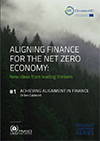
Achieving Alignment in Finance
2 September 2020 | Ben Caldecott | Report
This paper examines how financial institutions can move beyond climate risk management and towards much closer alignment with climate outcomes. Instead of incidentally contributing to alignment with climate outcomes through climate risk management initiatives, we need specific ways of dealing with and contributing to the challenge of alignment. These need to be articulated, developed, and scaled across the financial system rapidly. Without rebalancing the distribution of effort and spending more time explicitly on alignment with climate outcomes, we cannot ever hope to align finance and the financial system with climate change objectives. This report is one attempt to try and rebalance the conversation.
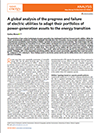
A global analysis of the progress and failure of electric utilities to adapt their portfolios of power-generation assets to the energy transition
31 August 2020 | Galina Alova | Journal Article
The penetration of low-carbon technologies in power generation has challenged fossil-fuel-focused electric utilities. While the extant, predominantly qualitative, literature highlights diversification into renewables among possible adaptation strategies, comprehensive quantitative understanding of utilities' portfolio decarbonization has been missing. This study bridges this gap, systematically quantifying the transitions of over 3,000 utilities worldwide from fossil-fuelled capacity to renewables over the past two decades. It applies a machine-learning-based clustering algorithm to a historical global asset-level dataset, distilling four macro-behaviours and sub-patterns within them. Three-quarters of the utilities did not expand their portfolios. Of the remaining companies, a handful grew coal ahead of other assets, while half favoured gas and the rest prioritized renewables growth. Strikingly, 60% of the renewables-prioritizing utilities had not ceased concurrently expanding their fossil-fuel portfolio, compared to 15% reducing it. These findings point to electricity system inertia and the utility-driven risk of carbon lock-in and asset stranding.
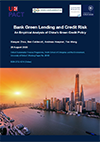
Bank Green Lending and Credit Risk An Empirical Analysis of China's Green Credit Policy (pdf)
28 August 2020 | Xiaoyan Zhou, Ben Caldecott, Andreas Hoepner, Yao Wang | Working Paper
This study empirically investigates the relationship between Chinese banks' green lending and their credit risk, and how China's green finance regulations contribute to the solvency of individual banks and the resilience of the financial system as a whole. Using a sample of 41 Chinese banks for the period 2007-2018, we find that the association between a bank's (relative) green lending as a proportion of its overall loan portfolio and its credit risk depends critically on the size and structure of state ownership. While the implementation of China's Green Credit Policy reduces credit risk for the major state-controlled banks, it increases credit risk for city and regional commercial banks. This performance difference is largely due to information and expertise asymmetries, with city and regional commercial banks having less access to information and expertise necessary to evaluate the credit risk of green lending. Understanding this phenomenon can help policymakers tailor green finance policies according to banks' characteristics. It also suggests that mechanisms and platforms for city/regional commercial banks to learn from major state-controlled banks could be beneficial.
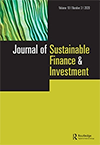
Post Covid-19 stimulus and bailouts need to be compatible with the Paris Agreement
20 August 2020 | Ben Caldecott | Journal Article
Covid-19 recovery efforts via public and private finance should not support assets and companies that are incompatible with the Paris Agreement. Yet even before the current crisis, there was a lack of agreement about what investor portfolio or bank loan book alignment with climate change outcomes actually means, and what assets are (in)compatible with different carbon budgets and global warming thresholds. We need to clarify this urgently and embed it within decision-making frameworks. Assessing (in)compatibility with a warming threshold should take account of carbon lock-in. We also need to develop appropriate confidence levels for measuring (in)compatibility. The state of (in)compatibility changes under different circumstances and targets for alignment should be set in a way that explicitly acknowledges these uncertainties. A portfolio with a lower confidence level would be less desirable than one with the same level of alignment and a higher level of confidence.

The Effect of Firm-level ESG Practices on Macroeconomic Performance (pdf)
3 June 2020 | Xiaoyan Zhou, Ben Caldecott, Elizabeth Harnett | Working Paper
This working paper investigates whether the development and adoption of firm-level environmental, social and governance (ESG) practices affects national macroeconomic performance, and whether this differs between developed countries and emerging economies. Using dynamic panel techniques - generalised method-of-moments (GMM) estimators - we find that an increase of micro-ESG performance can result in the improvement of living standards as measured by GDP per capita. When we test this link by country type, we find that firm-level social performance in a country is positively associated with GDP per capita in both developed countries and emerging economies. As for the other two components of firm-level ESG measures, namely environmental and governance performance, we find that these affect macroeconomic performance in emerging economies, but that the effects remain insignificant in developed countries. While further research is needed, these results may be of particular interest to policymakers and central banks, as they suggest that encouraging the adoption of ESG practices at the firm-level could support macroeconomic performance.
2019
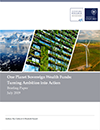
One Planet Sovereign Wealth Funds: Turning ambition into action (pdf)
9 July 2019 | Ben Caldecott, Elizabeth Harnett | Briefing Paper
Given their size, influence, and long-term investment horizons, Sovereign Wealth Funds (SWFs) are uniquely placed among asset owners to promote and implement the alignment of finance with the Paris Agreement and the Sustainable Development Goals. Yet, to date, sustainable investment has remained on the periphery of SWF investment decision-making. The One Planet Sovereign Wealth Fund Group was established in December 2017. Its founding members are the Abu Dhabi Investment Authority, Kuwait Investment Authority, the New Zealand Superannuation Fund, Norges Bank Investment Management, the Public Investment Fund of the Kingdom of Saudi Arabia, and the Qatar Investment Authority. These six funds together hold approximately USD 3.07 trillion in assets under management as of June 2018, representing around 40% of the sector globally. On the 6th July 2018, the One Planet Group published a voluntary framework outlining principles for integrating climate change into SWF governance and investment processes. These principles are structured around three key themes: alignment, ownership, and integration. In this briefing paper we make recommendations to help guide SWFs in their implementation of the Framework and its principles.

Sustainability Improvement Loans: a risk-based approach to changing capital requirements in favour of sustainability outcomes (pdf)
12 June 2019 | Jakob Thomä, Ben Caldecott, Soline Ralite | Working Paper
Policymakers are exploring whether to introduce Green Supporting Factors (GSFs) that would incentivise banks to lend to 'green' activities under capital requirement frameworks. This takes capital requirement frameworks away from their risk-based origins and this move is widely contested. This paper suggests an alternative pathway that satisfies the objective of aligning capital requirements with sustainability, while preserving their core role of supporting risk management. We introduce the concept of Sustainability Improvement Loans (SILs) that could merit lower capital charges as they are lower risk. We define SILs and how they could incentivise sustainability practices as well as reduce risk. The potential pathway to policy application and its estimated effects on banks' capital and profitability is assessed, as well as the extent to which the policy is aligned with the financial stability objectives of central banks and financial supervisors.
2018

Summary of Proceedings: 7th Sustainable Finance Forum and 2nd Asset-level Data Initiative (ADI) Annual Meeting at Waddesdon Manor | 7 to 8 June 2018 (pdf)
14 December 2018 | Elizabeth Harnett, Conor Hickey, Lucas Kruitwagen, Matthew McCarten, Xiao Zhou | Conference Proceedings
The University of Oxford's Smith School of Enterprise and the Environment and The Rothschild Foundation, together with the KR Foundation, held the 7th Sustainable Finance Forum at Waddesdon Manor, Buckinghamshire, on the 7 and 8 June 2018. The 7th Forum was focused on monitoring and measuring the impacts of investments and investee companies on climate change and the SDGs. This report provides a summary of the proceedings and deliberations from the Forum. It outlines the key discussion points and issues that emerged during the sessions held.

Carbon Lock-in Curves and Southeast Asia: Implications for the Paris Agreement (pdf)
18 October 2018 | Ben Caldecott, Matthew McCarten, Charalampos Triantafyllidis | Briefing Paper
Carbon Lock-in Curves (CLICs) analysis can be used to assess current and planned assets globally, within regions, within countries, and within companies. We can also assess investor portfolios and bank loan books which contain these assets. It means that groups can no longer make unsubstantiated claims about how their assets or investments are aligned with climate change mitigation or the Paris Agreement. Using CLICs we can now verify and evaluate such claims objectively and transparently, and this is essential if we are to move the power sector, and indeed other sectors, towards net zero carbon emissions. As a case study in this report we have applied CLICs to analyse Southeast Asia's current and planned fossil fuel generation assets. We find that around 84 percent of these assets are incompatible with a Paris Agreement aligned carbon budget.

Climate risk analysis from space: remote sensing, machine learning, and the future of measuring climate-related risk (pdf)
23 July 2018 | Oxford Sustainable Finance Group, Carbon Delta, GFZ | Report
The exponential increase in space-based sensing, computing power, and algorithmic complexity means that the development of a global catalogue of every physical asset in the world is within technical feasibility. Accurate asset-level data can dramatically enhance the ability of investors, regulators, governments, and civil society to measure and manage different forms of environmental risk, opportunity, and impact. In particular, remote sensing can help identify the features and use of assets relevant to determining asset-level GHG emissions. This report examines the potential role of new technologies to secure better asset-level data and at higher refresh rates.

Stranded Assets and the Environment: Risk, Resilience and Opportunity
10 May 2018 | Edited by Ben Caldecott | Forewords by Achim Steiner, Lord Nicholas Stern | Including chapters by Sarah Barker, Ben Caldecott, Elizabeth Harnett, Alexander Pfeiffer and Daniel Tulloch | Book
Drawing on the work of leading researchers and practitioners from a range of disciplines, including economic geography, economics, economic history, finance, law, and public policy, this edited collection provides a comprehensive assessment of stranded assets and the environment, covering the fundamental issues and debates, including climate change and societal responses to environmental change, as well as its origins and theoretical basis. This book will be of great relevance to scholars, practitioners and policymakers with an interest in include economics, business and development studies, climate policy and environmental studies in general.

Stranded Assets: Developments in Finance and Investment
1 May 2018 | Edited by Ben Caldecott | Including chapters by Sarah Barker, Elizabeth Harnett and Lucas Kruitwagen | Book
The topic of 'stranded assets' created by environment-related risk factors has risen up the agenda dramatically, influencing many pressing topics in relation to global environmental change. Taken as a whole, this book provides some of the latest thinking on how stranded assets are relevant to investor strategy and decision-making, as well as those seeking to understand and influence financial institutions.

Directors' Liability and Climate Risk: National Legal Papers for Australia, Canada, South Africa, and the United Kingdom
17 April 2018 | Sarah Barker, Alice Garton, Christine Reddell, Janis Sarra, Alexia Staker, Cynthia Williams | Reports
The Commonwealth Climate and Law Initiative (CCLI) is examining the legal basis for directors and trustees to take account of physical climate change risk and societal responses to climate change, under prevailing statutory and common (judge-made) laws. These are the first comprehensive legal assessments of the discharge of directors' duties in the climate context for four Commonwealth common law countries: Australia, Canada, South Africa, and the United Kingdom. These have been complemented by conferences in Australia (August 2016), Canada (October 2017), South Africa (January 2018) and the UK (June 2016). The national legal papers follow a uniform structure and can be downloaded: Australia, Canada, South Africa, and the United Kingdom (pdfs).

Asset-level data and the Energy Transition (pdf)
6 April 2018 | Ben Caldecott, Gerard Dericks, Geraldine Bouveret, Kim Schumacher, Alexander Pfeiffer, Daniel J. Tulloch, Lucas Kruitwagen, Matthew McCarten | Report
A key barrier for financial institutions responding to environmental risks are shortcomings in the availability of appropriate forms of data. This report outlines the potential benefits and users of asset-level data and details the construction of a demonstrator asset-level database: the Assets@Risk database. This demonstrator database aggregates asset-level data across the globe for the major carbon emitting industries: Power, Steel & Iron, Cement, Automobile, Airlines, and Shipping, and applies robust peer-reviewed methodologies for the construction of Cumulative Committed Carbon Emissions (CCCEs) and technologies for Reducing Cumulative Committed Carbon Emissions (RCCCEs) to each individual asset. Each industry database comprises sufficient assets to account for at least two-thirds of total global emissions within its industry. This combined database uniquely allows for the granular estimation of global climate related-risks and the potential for their mitigation.

Crude awakening: making oil major business models climate-compatible
22 March 2018 | Ben Caldecott, Ingrid Holmes, Lucas Kruitwagen, Dileimy Orozco, Shane Tomlinson | Report
Which oil & gas company strategies are more or less likely to be successful under different energy transition scenarios? How can we identify company strategies more 'robust' to climate-related transition risks? Which company strategies exhibit these characteristics and which ones don't? These are questions that the Oxford Sustainable Finance Group and E3G have been exploring in the context of our 2 Degree Pathways project. At the heart of the project is a simulated wargame', where players roleplay oil & gas companies, exploring for and buying and selling assets, diversifying to 'green' investment, and setting dividend policy. This wargame is designed to discover unintended consequences and path dependencies to help understand how decisions today could affect company success over the longer term. This report summarises the findings from the first phase of the project.

Fossil fuel company Investor Relations (IR) departments and engagement on climate change (pdf)
28 February 2018 | Duncan MacDonald-Korth, Elizabeth Harnett, Ben Caldecott | Briefing Paper
This Briefing Paper reviews the roles and behaviours of Investor Relations (IR) functions in listed fossil fuel companies, particularly those listed in London. It is based on an ongoing study that seeks to illuminate the poorly understood role of IR teams in the context of climate change engagement. The project has been conceived as a way to help improve efforts to engage with listed fossil fuel companies on climate change, particularly by civil society and investor coalitions. These engagement efforts have increased significantly over recent years. The paper provides an overview of IR, gives insight into IR professionals themselves, and sets out how civil society and investors can develop strategies that could lead to more productive engagement with fossil fuel companies through their IR departments.

Stranded Property Assets in China's Resource-based Cities: implications for financial stability? (pdf)
15 Feruary 2018 | Gerard Dericks, Robert Potts, Ben Caldecott | Working Paper
More than one quarter of China's housing stock is currently located in 'resource-based cities' (RBCs), where the majority of economic activity is derived from the extraction of non-renewable resources. We hypothesise that residential and commercial property assets may become stranded in RBCs as China implements more stringent policies to mitigate the environmental pollution caused by extractive industries. Should this lead to a widespread fall in property prices in RBCs, it could have a profound effect on wider financial stability, as it is estimated that the majority of China's outstanding debt is in the real estate sector with a material proportion of this tied to RBCs.
2017

Concerns misplaced: will compliance with the TCFD recommendations really expose companies and directors to liability risk? (pdf)
25 September 2017 | Alexia Staker, Alice Garton, Sarah Barker | Briefing Paper
In this briefing from the Commonwealth Climate and Law Initiative (CCLI), experts refute misplaced fears in industry about the legal risks of climate disclosure. New analysis confirms that saying nothing at all about climate issues in corporate reporting puts directors at far greater risk of being sued than disclosure would. Complying with the new reporting recommendations from the Task Force on Climate-related Financial Disclosure (TCFD) will actually protect companies from the kind of liability claims they fear. It is highly likely that there will be additional regulation requiring disclosure of climate risk, or, at the very least, existing laws will be interpreted as requiring robust climate risk analysis. For all these reasons, astute directors should embrace the TCFD recommendations and recognise that climate-risk disclosure is a key component of financial reporting.

The fate of European coal-fired power stations planned in the mid-2000s: Insights for policymakers, companies, and investors considering new coal (pdf)
11 August 2017 | Ben Caldecott, Daniel J. Tulloch, Geraldine Bouveret, Alex Pfeiffer, Lucas Kruitwagen, Jeremy McDaniels, Gerard Dericks | Working Paper
Between 2005 and 2008 European utilities were determined to embark on a major coal-plant construction programme. They announced plans to build 49 GW of new coal-fired power capacity. To date 77% of this new capacity has been cancelled, with more likely to be cancelled soon. The economics of existing plants have deteriorated too. There are a number of important questions that stem from this: why did the majority of plant proposals not go ahead; what makes the projects that did proceed different; what challenges are these new plants likely to face now and in the future; and to what extent are the projects that did succeed likely to become stranded generation assets? The results are relevant not just to understanding the fate of the remaining coal-fired power stations in Europe, but also the future of those currently planned or being built in other countries. This working paper examines each of these questions in turn.

Ultra High-Net-Worth Individuals (UHNWIs), Private Banks, and Sustainable Finance (pdf)
3 August 2017 | Ben Caldecott, Elizabeth Harnett, Duncan MacDonald-Korth | Working Paper
The entire global population of 212,615 Ultra High-Net-Worth Individuals (UHNWIs) was worth US$30 trillion in 2016, compared to OECD pension funds with assets of US$26 trillion. Despite their significance and growing importance, very little research has explored the financial and economic geography of UHNWIs. This working paper makes a significant contribution to understanding UHNWIs and also to how they may or may not support the growth and development of sustainable finance. It is based on extensive primary research with both UHNWIs and their private bankers/financial advisers, including 47 semi-structured interviews, a structured quantitative survey, and a multi-stakeholder research forum.

Stranded Assets and Thermal Coal in China: An analysis of environment-related risk exposure (pdf)
28 February 2017 | Ben Caldecott, Gerard Dericks, Daniel Tulloch, Xiawei Liao, Lucas Kruitwagen, Geraldine Bouveret, James Mitchell | Working Paper
We analysed the exposure of current and planned coal-fired generation in China to the risk of asset stranding. We examined the environment-related risks facing every coal-fired power station owned by the top 50 coal-fired power utilities in China (which together comprise 89% of China's coal-fired capacity) and measured each power station's exposure to 19 different environment-related risks. To examine the scale of potential stranded coal assets in China, we also developed four illustrative scenarios reflecting the different speeds and scales at which risk factors could realistically materialise. This analysis can help to inform specific investor actions related to risk management, screening, voting, engagement, and disinvestment.
Read the report in Chinese

Managing the political economy frictions of closing coal in China (pdf)
28 February 2017 | Ben Caldecott, Geraldine Bouveret, Gerard Dericks, Lucas Kruitwagen, Daniel Tulloch, Xiawei Liao | Discussion Paper
Stranded coal assets are inevitable given concerns about pollution and competition from cleaner technologies. This will have associated economic, social, and political implications. Central and provincial-level government in China, as well as other stakeholders, have a significant interest in successfully managing the economic and political consequences of power station closures. This discussion paper undertakes an initial assessment of the political economy implications associated with the premature closure of coal assets in China. It discusses stranding facing the coal industry more broadly, before focusing on coal-fired generation specifically. The paper estimates the potential scale and geographical distribution of stranded coal-fired generation assets at a provincial-level before outlining avenues for future research in China and internationally.
Read the report in Chinese

Closing Coal in China: International experiences to inform power sector reform (pdf)
28 February 2017 | David Robinson, Xin Li | Working Paper
This working paper addresses two issues related to coal-fired generation in China. The first is how selected countries in the European Union and North America are making the transition away from unabated coal-fired power. The second is to identify power market reforms that could ease a similar transition in China. While China is very different from the OECD countries that are the focus of this study, there are many challenges and opportunities where international experience may be relevant for China.
Download Full Report in Chinese

Revolution not evolution: Marginal change and the transformation of the fossil fuel industry (pdf)
17 February 2017 | Author: Kingsmill Bond | Discussion Paper
Orthodox thinking on the nature of change in energy systems tends to focus on how long it will take for the current fossil fuel based system to shift to a renewable based system which will be equally dominant. This is important for many reasons, above all as a tool to calculate how long it will take for the world to reduce and eliminate carbon emissions. However, this is not the key issue for incumbent companies and financial markets. What matters for companies and for financial markets is marginal change. For a company, marginal change is simply sales growth; and for financial markets marginal change acts as a signal of coming success or failure. This discussion paper examines when renewables will make up all the marginal growth in global energy supply and the disruptive change incumbents are likely to face as competition intensifies between fuels, prices fall, and assets become stranded.

The state of climate change knowledge among UK and Australian institutional investors (pdf)
15 February 2017 | Author: Elizabeth Harnett | Working Paper
This discussion paper outlines the current understanding of climate change in the investment markets in the UK and Australia, providing novel insights from 58 semi-structured interviews with a range of investment professions and a survey of 154 investors. The UK and Australia both have substantial and growing institutional investment systems, as well as increasing activism surrounding Responsible Investment. Given this, more responsible management of these assets could, potentially, provide significant impetus in shifting capital towards lower carbon economies.
2016

Summary of Proceedings: 5th Stranded Assets Forum at Waddesdon Manor, 15th April 2016 (pdf)
13 October 2016 | Lucas Kruitwagen, Elizabeth Harnett, Ben Caldecott | Conference Proceedings
The University of Oxford's Smith School of Enterprise and the Environment and The Rothschild Foundation held the fifth Stranded Assets Forum at Waddesdon Manor, Buckinghamshire, on the 15th April 2016. The Forum examined ultra high-net-worth individuals (UHNWIs), the advice they receive on sustainable investment topics, and how they could shape demand for and the practice of sustainable investment. This report provides a summary of the proceedings and deliberations from the Forum. It outlines the key discussion points and issues that emerged during the sessions held.

Stranded Assets in Palm Oil Production: A case study of Indonesia (pdf)
8 July 2016 | Alexandra Morel, Rachel Friedman, Daniel Tulloch, Ben Caldecott | Working Paper
We identify and assess the environment-related risks facing financial, human, natural, physical, and social assets along the Indonesia palm oil value chain. This working paper also assesses the extent to which these risks are currently being addressed and reviews current ESG initiatives related to the Indonesian palm oil value chain and whether these are a suitable response. Finally, we look at the companies involved in the Indonesian oil palm oil value chain and examine the extent to which they are addressing these issues.

Stranded Assets and Thermal Coal in Japan: An analysis of environment-related risk exposure (pdf)
12 May 2016 | Ben Caldecott, Gerard Dericks, Daniel Tulloch, Lucas Kruitwagen, Irem Kok | Working Paper
Deploying a 'bottom up' asset-level methodology, we analysed the exposure of all of Japan's current and planned coal-fired power stations to environment-related risk. Planned coal capacity greatly exceeds that required for replacement - by 191%. This may result in overcapacity and combined with competition from other forms of generation capacity with lower marginal costs (e.g. nuclear and renewables), lead to significant asset stranding of coal generation assets. Stranded coal assets in Japan would affect utility returns for investors; impair the ability of utilities to service outstanding debt obligations; and create stranded assets that have to be absorbed by taxpayers and ratepayers.
Download full report in Japanese.

Summary of Proceedings: 4th Stranded Assets Forum at Waddesdon Manor, 23rd October 2015 (pdf)
8 March 2016 | Lucas Kruitwagen, Duncan MacDonald-Korth, Ben Caldecott | Conference Proceedings
The University of Oxford's Smith School of Enterprise and the Environment and The Rothschild Foundation held the fourth Stranded Assets Forum at Waddesdon Manor, Buckinghamshire, on the 23rd October 2015. The Forum explored how environment-related risks, such as climate change, intersect with developments in prudential regulation and financial conduct. This report provides a summary of the proceedings and deliberations from the Forum. It outlines the key discussion points and issues that emerged during the sessions held.

Stranded Assets and Thermal Coal: An analysis of environment-related risk exposure (pdf)
27 January 2016 | Ben Caldecott, Lucas Kruitwagen, Gerard Dericks, Daniel Tulloch, Irem Kok, James Mitchell | Report
The top 100 coal-fired utilities, top 20 thermal coal miners, and top 30 coal-to-liquids companies have been comprehensively assessed for their exposure to environment-related risks, including: water stress, air pollution concerns, climate change policy, carbon capture and storage retrofitability, future heat stress, remediation liabilities, and competition from renewables and gas. The research is designed to help investors, civil society, and company management to analyse the environmental performance of coal companies and will inform specific investor actions related to risk management, screening, voting, engagement, and disinvestment. The research also has clear implications for current disclosure processes, including the new Task Force on Climate-related Financial Disclosures.
2015

A Framework for Protected Area Asset Management (pdf)
17 December 2015 | Paul Jepson, Ben Caldecott, Harriet Milligan, Dexiang Chen | Report
Protected areas (PAs) are a large and growing asset class with unique legal and social characteristics. This report sets out a new asset framework for PAs, that involves new typologies for assets, investments, value creation, value capture, and risk management. This new framework could help PAs to generate more value, attract new investment, and better manage the risks that could strand PA assets. The new asset framework also represents a heuristic tool that can help underpin the case for new investment in PAs. In the report, we apply the framework to case studies in Brazil and Tanzania, conduct a systematic meta-analysis of the literature on PA value creation, undertake a preliminary assessment of the state of investments into PAs, and review current and emerging risks facing PAs.

Making Climate Policy More Like Monetary Policy: Calibrating Climate Policy Through Corporate Solvency (pdf)
17 November 2015 | Ben Caldecott, Gerard Dericks | Working Paper
We propose that corporate solvency metrics be used as an objective tool for policymakers to calibrate the optimal magnitude of climate policies, and thereby achieve greater emissions abatement at lower social cost. In particular, solvency metrics could calibrate the optimal severity of climate policies and/or the generosity of industrial compensation. Policymakers currently monitor and regulate certain aspects of corporate solvency for financial firms (such as capital reserve requirements) in order to reduce the risk of bankruptcy while simultaneously maintaining profitability. In a similar vein, policymakers could do likewise with respect to climate change policies which target carbon-intensive firms.

Investment Consultants and Green Investment: Risking Stranded Advice? (pdf)
25 August 2015 | Ben Caldecott, Dane Rook | Working Paper
Investment consultants are key 'gatekeepers' for asset owners, such as pension funds, and are instrumental in determining whether products and services are accepted or not by the financial community. Empirical research conducted as part of this study suggests that inadequate investment consultant-asset owner relationships are hindering the development of green investment. This study investigates this problem and examines its potential causes. We make recommendations to remedy these issues, set out new criteria to assess the capabilities of investment consultants with respect to green investment, and outline a new algorithmic tool to empower asset owners.

Cognitive Biases and Stranded Assets: Detecting Psychological Vulnerabilities within International Oil Companies (pdf)
16 July 2015 | Dane Rook, Ben Caldecott | Working Paper
The trend for a larger volume of capex to be spread across a smaller number of projects increases the risk of psychological error - they become more likely as projects become larger, more complicated, and of lengthier duration. To help shareholders and companies guard against cognitive biases, we assessed and ranked the Boards of the six major international oil companies to see how susceptible they are to groupthink and salience, which can exacerbate psychological errors. We also set out diagnostic tools that can be used for this purpose.

Summary of Proceedings: 3rd Stranded Assets Forum at Waddesdon Manor, 6th March 2015 (pdf)
20 April 2015 | Ben Caldecott, Dane Rook | Conference Proceedings
The University of Oxford's Smith School of Enterprise and the Environment and The Rothschild Foundation held the third Stranded Assets Forum at Waddesdon Manor, Buckinghamshire, on the 6th March 2015. The Forum explored whether the investment consultant industry is up to the job on environmental, climate, and sustainability topics and examined ways to address potential barriers. This report provides a summary of the proceedings and deliberations from the Forum. It outlines the key discussion points and issues that emerged during the sessions held.

Subcritical Coal in Australia: Risks to Investors and Implications for Policymakers (pdf)
27 March 2015 | Ben Caldecott, Gerard Dericks, James Mitchell | Working Paper
We have located subcritical coal-fired power stations in Australia and identified the ones most at risk of stranding due to their carbon intensity and local environmental impacts. The research shows which companies own these assets in Australia and ranks companies by exposure. In addition, we examine the implications of subcritical coal for Australian policymakers, in particular we look at the costs, benefits, and mechanisms for phasing out subcritical coal in Australia.

Stranded Assets and Subcritical Coal: The Risk to Companies and Investors (pdf)
13 March 2015 | Ben Caldecott, Gerard Dericks, James Mitchell | Report
We have located subcritical coal-fired power stations globally and identified the ones most at risk of stranding due to their carbon intensity and deleterious effects on local air pollution and water stress. The research shows which companies own these assets and ranks companies by exposure. Furthermore, we examine how environment-related risks facing subcritical coal assets might develop in the future.

Evaluating Capex Risk: New Metrics to Assess Extractive Industry Project Portfolios (pdf)
10 February 2015 | Dane Rook, Ben Caldecott | Working Paper
This paper sets out new metrics to assess whether natural resource company capex is responsibly diversified. There is growing criticism of existing metrics for assessing the prospects of oil majors, such as Reserve-Replacement Ratios, and we have sought to address this directly by introducing two novel, and straightforward, metrics - capex density and capex evenness. The paper also includes a starter manual for how to use these new metrics and is accompanied by a capex balance calculator, which can be downloaded.

Stranded Carbon Assets and Negative Emissions Technologies (pdf)
3 February 2015 | Ben Caldecott, Guy Lomax, Mark Workman | Working Paper
Negative Emissions Technologies (NETs) have the potential to remove carbon dioxide from the atmosphere and this could reduce the impacts of ocean acidification and anthropogenic climate change. To see whether carbon budgets can be extended by NETs and if so, for how long, we quantify the 'extra space' that they could create and then examine the potential implications for carbon-intensive sectors.
2014

Towards a Framework for Protected Area Asset Management (pdf)
21 November 2014 | Ben Caldecott, Paul Jepson | Discussion Paper
Protected areas (PAs) are a large and growing asset class with unique legal and social characteristics. This discussion paper provides an update on the development of a new asset framework for PAs, that involves new typologies for investment, situated assets, forms of value, value capture, and risk. This new framework could help PAs to generate more value, attract new investment, and better manage risks that could strand PA assets.

Summary of Proceedings: 2nd Stranded Assets Forum at Waddesdon Manor, 4th September 2014 (pdf)
10 October 2014 | Ben Caldecott, Dane Rook, Julian Ashwin | Conference Proceedings
The University of Oxford's Smith School of Enterprise and the Environment and The Rothschild Foundation held the second Stranded Assets Forum at Waddesdon Manor, Buckinghamshire, on the 4th September 2014. The topic was fossil fuel divestment and endowments. This report provides a summary of the proceedings and deliberations from the Forum. It outlines the key discussion points and issues that emerged during the sessions held.

China's Financial Markets: The Risks and Opportunities of Stranded Assets (pdf)
1 September 2014 | Ben Caldecott, Nick Robins | Briefing Paper
This Briefing Paper was produced to help inform an International Institute for Sustainable Development (IISD) and UNEP Inquiry collaboration with policymakers in China, particularly those from the Development Research Center of the State Council (DRC) and People's Bank of China (PBoC). The paper examines the risks and opportunities associated with stranded assets, provides five international case studies, and identifies how these issues might be relevant to Chinese policy makers.
Download Full Report in Chinese (pdf)

Financial Dynamics of the Environment: Risks, Impacts, and Barriers to Resilience (pdf)
14 July 2014 | Ben Caldecott, Jeremy McDaniels | Working Paper for UNEP Inquiry into the Design of a Sustainable Financial System
This Working Paper does three things: first, summarises the underlying logic for why the financial sector should care about the environment and environment-related risks; second, reviews the barriers preventing the financial system from managing such issues; and third, identifies the researchers and organisations working on these topics. This is a reference guide for those concerned with both how environment-related risks could affect the financial sector and what financial institutions can do to manage such risks.

Summary of Proceedings from the 1st Stranded Assets Forum at Waddesdon Manor, 14-15 March 2014 (pdf)
25 April 2014 | Ben Caldecott, Jeremy McDaniels, Gerard Dericks | Conference Proceedings
The University of Oxford's Smith School of Enterprise and the Environment and The Rothschild Foundation held the first Stranded Assets Forum at Waddesdon Manor, Buckinghamshire, on the 14th and 15th March 2014. This report provides a summary of the proceedings and deliberations from the Forum. It outlines the key discussion points and issues that emerged during the sessions held.

Stranded Assets and Scenarios (pdf)
28 January 2014 | Ben Caldecott, James Tilbury, Christian Carey | Discussion Paper
Scenarios can help investors, firms and policy makers increase the resilience of assets by making them better prepared for inherently hard to predict events. In this high-level discussion paper we review existing scenarios to determine trends and gaps in the literature and propose a general type of scenario that would be most useful for the management of stranded asset risks.

Stranded Generation Assets: Implications for European Capacity Mechanisms, Energy Markets and Climate Policy (pdf)
17 January 2014 | Ben Caldecott, Jeremy McDaniels | Working Paper
An increasing number of major EU utilities have decided to mothball or prematurely close recently built, high-efficiency combined-cycle gas turbine (CCGT) power plants. This working paper examines how EU utilities are reacting, how these stranded assets are affecting firm value and strategy, and what implications may exist for energy market design, low-carbon energy and climate policy.
2013

Stranded Down Under? Environment-related Factors Changing China's Demand for Coal and What this Means for Australian Coal Assets (pdf)
16 December 2013 | Ben Caldecott, James Tilbury, Yuge Ma | Report
China's demand for coal is changing as a result of environment-related factors, including environmental regulation, developments in cleaner technologies, local pollution, improving energy efficiency, changing resource landscapes and political activism. We look at how this evolving demand picture could then translate into impacts on the coal price and then on the stranded asset risks faced by coal and coal-related assets in Australia - a country that is a large and growing coal exporter to China.

Stranded Assets and the Fossil Fuel Divestment Campaign: What Does Divestment Mean for the Valuation of Fossil Fuel Assets? (pdf)
8 October 2013 | Atif Ansar, Ben Caldecott, James Tilbury | Report
The fossil fuel divestment campaign has rapidly gained traction throughout university campuses and elsewhere since its launch. As part of our research we test whether the divestment campaign could affect fossil fuel assets and if so, how, to what extent, and over which time horizons. We also look at the similarities and differences between this campaign and others, such as tobacco and apartheid.

Stranded Assets in Agriculture: Protecting Value from Environment-related Risks (pdf)
9 August 2013 | Ben Caldecott, Nicholas Howarth, Patrick McSharry | Report
This report maps out environment-related risks in the agricultural supply chain and shows how they might create stranded assets over time. We have systematised the different risk factors and have completed an assessment of where and how risks might affect agricultural assets. We have also completed a high-level Value at Risk (VaR) assessment to give an indication of the magnitudes of capital exposed and to stimulate further work in this area.
